Graduate

Rare Insect Find Generates National Attention
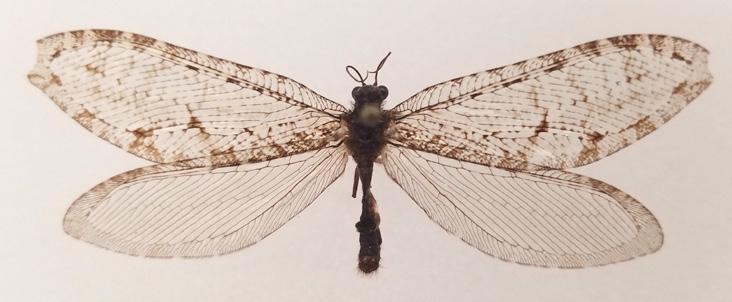

VOL. 36 • 2023
THE
BumpersCollege.uark.edu
@BumpersCollege
BUMPERS COLLEGE ALUMNI SOCIETY BOARD OF DIRECTORS
• Scott Walnofer, Vice President
• Todd Martin, Past President
• Lindy O’Neal, Past President
• Taylor Adams, Past President
• Kelly Chaney
• Jennifer Cook
• Katie Branscum
• Natalie Bartholomew
• Steve Cochran
The Arkansas Alumni Association has been the keeper of University of Arkansas traditions for more than 135 years. The mission is simple: to serve our alumni and to promote the University of Arkansas. You don’t have to be a graduate; friends of the university are welcome to join.
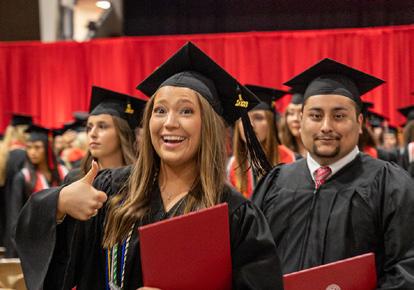

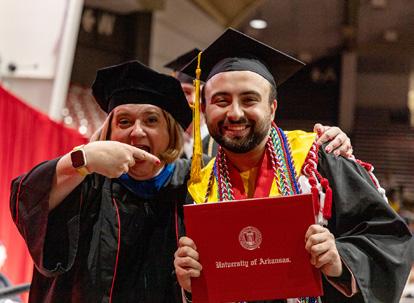
Your membership not only benefits you; it also benefits the university by supporting scholarships, student recruitment, Student Alumni Board, Homecoming, reunions, faculty awards and more.
Take a minute to sign up today. Call one of the numbers below or check our web site for more information on joining or renewing your membership.
479-575-2179
1-888-275-2586 alumni.uark.edu
@BumpersCollege
/BumpersCollege
AAA Board
• Callie Free, Assistant Director of Internal Relations, Arkansas Alumni Association
• Deb Euculano, Director of Alumni Programs and Special Events, Arkansas Alumni Association
• Brandy Cox Jackson, Executive Director and Associate Vice Chancellor, Arkansas Alumni Association Ex Officio
• TBA, Coordinator of Development & External Relations, Bumpers College
• Dan Miller, Director of Development & External Relations, Bumpers College
The Graduate is published for alumni and friends of Dale Bumpers College of Agricultural, Food and Life Sciences and the University of Arkansas System Division of Agriculture.

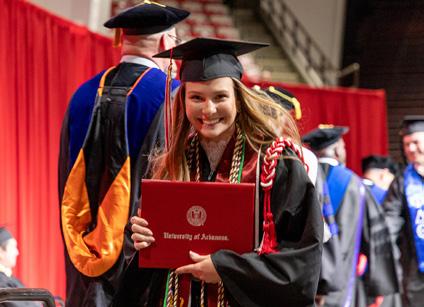
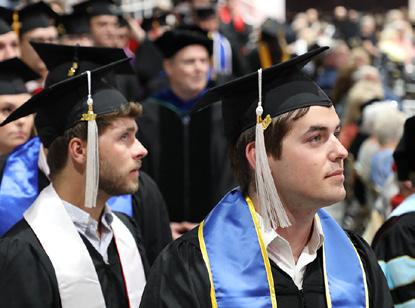
Send alumni news and other correspondence to Bumpers College Alumni Society, AFLS Office of External Relations, E202 AFLS Building, 1 University of Arkansas, Fayetteville, AR 72701
479-575-7096
Fax: 479-575-6890
E-mail: extrel@uark.edu
Editor: Robby Edwards
Photography: Daniela Medina, Karli Yarber, Robby Edwards, Ariel Romero
Designer: Ross Maute /BumpersCollege
Congratulations 2022-23 Graduates, Welcome to the Bumpers Family!
Photos by Daniela Medina & Ariel Romero
• Fendley Ragland, President
DALE BUMPERS COLLEGE OF AGRICULTURAL, FOOD AND LIFE SCIENCES
NY Times, NPR, Jimmy Fallon Cover Rare Insect Find by Entomology Alum Skvarla
Dewayne Goldmon: Outstanding Alumnus Q&A
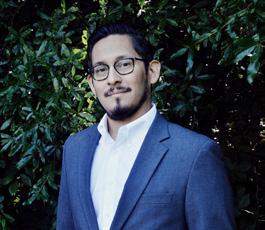

All Gifts Make An Impact – Meet A Few Donors
Meet Assistant Dean Jacquelyn WiersmaMosley

Meet Janet Collins, Director Of Career Services
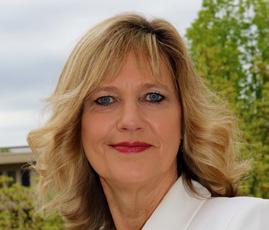
John Clark, Renowned Fruit Breeder, Faculty Member & Alumnus, Retires After 42 Years
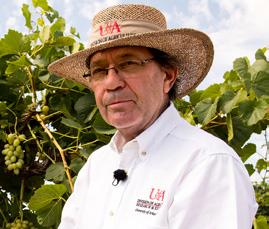
Meet Laykyn Rainbolt, Alumna & Coordinator For Undergraduate Student Recruitment

Meet Dan Miller, Director of Development & External Relations 17
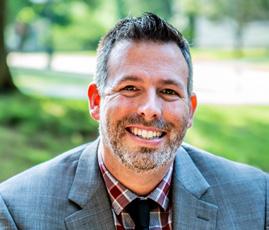
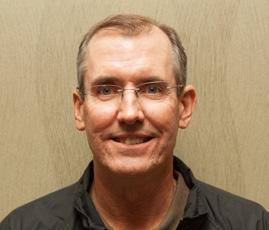
Year In Pics
Class Notes & In Memoriam
ON THE COVER: Entomology alumni Michael Skvarla (pictured) and Ray Fisher received national attention after publishing work on their rare find.
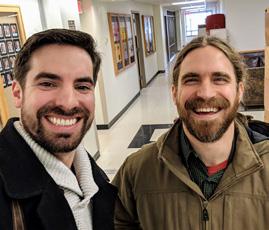
2
6
8
10
Ricardo Ekmay: Alumni Society Outstanding Young Alumnus Q&A
12
14
16
18
20
26
1 THE GRADUATE • 2023
NY Times, NPR & Jimmy Fallon Cover Rare Insect Find by Entomology Alum Skvarla
Everybody goes to Walmart, right? Apparently even “locally extinct” bugs.
Not just anyone would notice, but when a shopper is Michael Skvarla, an entomology graduate student, different-looking insects get your attention.
Skvarla is assistant research professor and head of the Insect Identification Laboratory at Penn State University. He identifies insects and other arthropods submitted by the public, writes and maintains entomology fact sheets, presents science-based information to the public via seminars and workshops, and conducts original research.
In 2012, he was a U of A student, earning his master’s and Ph.D. in entomology.
Walking into the Walmart Neighborhood Market on East Citizens Drive 11 years ago, he was probably thinking about milk and other items on his list when he noticed an uncommon bug on a wall outside the store. Like any good entomologist, he caught it and went inside.
by Robby Edwards
“I thought it looked interesting, so I put it in my hand and did the rest of my shopping with it between my fingers,” he said.
He took it home, prepared it for long-term storage and put it with other antlions, not realizing it was not an antlion. Like shoppers who forget to grab eggs, bread or whatever, he promptly forgot about it as it sat in his personal collection.

Almost 10 years later, in the fall of 2020 during the pandemic, Skvarla was teaching a PSU class via Zoom, and demonstrating insect identification to students remotely.
Specimens from the teaching collection would normally be used for demonstrations, but because campus visits were restricted, he pulled specimens from his personal collection. When it was time to teach how to identify antlions, he brought out the Walmart specimen as an example.
“I had just taught the students, ‘these are the characteristics you use to identify antlions,’” Skvarla said. “’They have clubbed antennae. They have lots of cross veins in the wings.’”
2 #AGFOODLIFE • 2023
Except while examining the specimen in front of the virtual class, it obviously did not match those characteristics.
“It was immediately apparent to me and everybody watching that, ‘oh, shoot,’ this is different and weird, in a good way – and this kind of dawning realization like, ‘oh, this is important,’” Skvarla said.
In front of students, Skvarla corrected his identification from eight years earlier. It was not an antlion (Myrmeleontidae), but a member of a different group – moth lacewings (Ithonidae). Nearly 60 species of moth lacewings live worldwide with only three in the U.S., all west of the Great Plains.
LACEWING MAPS THROUGH THE DECADES

Skvarla identified his specimen as Polystoechotes punctata, a species commonly known as giant lacewings. Today, they are common in western North America, from Alaska through the western U.S., and through Central America to Panama. Despite the huge distribution, they are not found in eastern North America. At least, not today. They were once common in the eastern U.S. and Canada until a sharp decline in the 1940s and 50s. No specimens have been seen east of the Great Plains since 1960.
Skvarla has housed the insect safely in the collections of the Frost Entomological Museum at Penn State, where scientists and students have access for further research.
The disappearance of giant lacewings in eastern North America is a mystery. Scientists have proposed possible explanations such as suppression of forest fires and ever-increasing light pollution; non-native predators/parasites; destruction of habitat for larval food sources; and introduction of non-native earthworms, which significantly altered the composition of forest leaf litter and soil.

“Entomology can function as a leading indicator for ecology,” Skvarla said. “The fact that this insect was spotted in a region where it hasn’t been seen in over half a century tells us something more broadly about the environment.”
After the discovery, Skvarla immediately contacted Ray Fisher to share the excitement and collaborate on the project. Fisher is an entomologist with the Mississippi Entomological Museum at Mississippi State University, but is based in Northwest Arkansas.
They analyzed previous records of giant lacewings, including museum holdings and community science submissions, and mapped them to determine their distribution over time. Records span a huge geographic range, from Alaska to Panama, and include multiple ecoregions in both eastern and western North America. The map revealed Skvarla’s specimen is the first documented find in the eastern side of the country in more than 50 years, and the first one reported in Arkansas.
Skvarla and Fisher said many endemic species (restricted to a geographic region), including 68 species of insects, are known from the Ozarks and at least 58 species of plants and animals have highly distinct populations with representatives in the region.
The Ozark Mountains and changing environments, not Walmart, could be key to the lacewing’s discovery.
“The Ozarks, in general, are very biodiverse, but they're undersurveyed compared to other diverse areas like the southern Appalachians,” Skvarla said. “If you were to pick areas in the country where these things could go undetected for 50 years, the Ozarks would be high on your list.”
 Research, including a geographic range, conducted by co-authors Ray Fisher and Michael Skvarla resulted in maps showing the discovery is the first in the eastern portion of North America in more than 50 years.
Michael Skvarla’s giant lacewing, captured at a local Walmart, is the first one ever reported in Arkansas.
Research, including a geographic range, conducted by co-authors Ray Fisher and Michael Skvarla resulted in maps showing the discovery is the first in the eastern portion of North America in more than 50 years.
Michael Skvarla’s giant lacewing, captured at a local Walmart, is the first one ever reported in Arkansas.
3 THE GRADUATE • 2023
Jurassic-Era, Jimmy Fallon, Misconceptions
Along with widespread publicity came misinformation. A major part of Skvarla and Fisher’s interview efforts involved correcting. By far the biggest misconception is calling the find a ‘Jurassic-era’ insect.
“The entire family (Ithonidae) can be traced to the Jurassic, not the species,” Fisher said. “As an analogy, consider birds. The origin of all birds can be traced to the Jurassic, but no one would look at a blue jay and call it Jurassic era.”
The Jurassic reference was widely used, including by Jimmy Fallon during his March 3, 2023, monologue.
“Get this,” he said. “I heard that a scientist found a super-rare, Jurassic-era insect at a Walmart in Arkansas. Yeah, I mean it’s ancient. And good news –it was immediately hired as a greeter. Hey, we have to laugh at ourselves, you know?”
The comment may not have been 100 percent accurate, but don’t expect the entomologists to be offended.
“It’s always good when arthropods get so much attention,” Fisher said. “This is the most attention any of my or Mike's research has fostered. I mean…Jimmy Fallon!
“We found something really neat, albeit not as jaw-dropping as rediscovering a ‘giant extinct Jurassic creature,’ but still fascinating,” Fisher said. “It's great to talk about misconceptions, insects broadly and of course giant lacewings, which are awesome in their own right.”
Another misconception involves the common name, giant. Compared to other animals, even other insects, giant lacewings aren’t really giant—mediumsized at best (25 mm), but they are quite large compared to other lacewing-like insects, hence the common name.
Additionally, many reports describe the species as “extinct.” In contrast, giant lacewings are very much extant in western North America, but have been extirpated (locally extinct) in eastern North America.
“It's certainly been exciting,” Skvarla said. “I figured some entomologists would be excited, maybe I'd get some questions at the next national entomology meeting, but I never thought it would blow up like it did.”

How did the lacewing end up on a Walmart wall? It’s actually normal. Brightly lit buildings such as gas stations, restaurants and Walmarts are a favorite place for insect collectors to search for specimens. Night-flying insects are attracted to the lights and rest on the walls during the day, not realizing they are exposed.
This behavior is detrimental, though, because once drawn to the location, they are unlikely to leave, repetitively being attracted to the bright lights each night. They do not reproduce, leading to the effect of light pollution. Today, giant lacewings are best found in this type of setting, to the west. The surprising aspect of the find isn’t Walmart, but that it was in eastern North America.
“It could have been 100 years since it was even in this area—and it’s been years since it's been spotted anywhere near it,” Skvarla said. “The next closest place they've been found was 1,200 miles away, so very unlikely it would have traveled that far.”
The researchers suspect the new specimen represents a rare, surviving eastern population of giant lacewings which evaded detection and extinction, but there are other possibilities. The most likely is the specimen was ‘hitch-hiking’ on a vehicle traveling from the west to the Arkansas Walmart. To test this idea, Fisher attempted to analyze the specimen’s DNA.
If it came from a western population, it should be evident in its genes. Unfortunately, due to rough storage conditions during the preceding eight years, no DNA was retrievable. Undaunted, Fisher is invigorated. More specimens will shed light on the mystery. He still
Michael Skvarla, head of the Insect Identification Laboratory at Penn State, earned M.S. and Ph.D. entomology degrees from the U of A.
4 #AGFOODLIFE • 2023
frequents areas near where Skvarla collected the specimen. Someday, maybe more specimens will be found, and the mystery solved.
Skvarla’s discovery has been reported on by NPR, BBC News, Science Daily, the New York Times, New York Post, Yahoo News, Popular Science, The Guardian and many others, and was mentioned by Jimmy Fallon during a monologue on The Tonight Show Starring Jimmy Fallon. After a couple of weeks of attention and interviews, life has returned to normal.
“I had my 15 minutes of fame, but it's largely blown over,” Skvarla said in March. “Last week was nothing but emails and interviews about giant lacewings, but that's died down. My dean sent me an email with the New York Post article, so it's on their radar now. I'll certainly include all of the impact from it on my next yearly review and promotion package.”
Skvarla’s lacewing received the most attention, but it’s not his only uncommon specimen.
“This is perhaps the most exciting discovery I've made like this, but it fits in with similar ‘look at this cool insect I found in an unexpected place’ publications I've written in the past,” Skvarla said.
Other unique finds include a rare wasp in Arkansas and earwig flies, rarely seen but Skvarla has a sizeable collection.
“We know so very little about the world around us,” Fisher said. “It doesn't feel that way. Information on so many creatures obvious to us from our backyards can be easily Googled or found on our bookshelves, but even that's not true. Common backyard organisms often get overlooked by researchers in place of alluring field trips to far-away jungles, but there's so much to discover right here.
“I have hundreds of undescribed species, new to science, most which are from this region, just sitting on my desk waiting for me to find time to publish them,” Fisher said. “I've already described over 90 species. If I described 900, then I still would have only scratched the surface of the diversity that is right here. My two toddlers have held more undescribed species in their tiny hands than most people hold described ones. Giant lacewings are one of a myriad. We know so little about them, but we also know so much. Science is about exploration. As (J.R.R. Tolkien’s) Gandalf said, ‘the world isn't in your books and maps, it's out there.’"
Skvarla, Larvae, Fisher, Free Rides
Fisher and Skvarla were graduate students in the same entomology lab at the U of A when Skvarla caught the lacewing, and they have remained friends and colleagues. Together, they tested hypotheses and wrote the publication on the giant lacewing discovery.
Their findings, “Rediscovery of Polystoechotes punctata in Eastern North America,” were published in the Proceedings of the Entomological Society of Washington in November 2022.
Like his lacewing, Skvarla, who lived in Fayetteville from 2009-15, enjoyed living in the Ozarks.
“The Ozarks are amazing and Fayetteville, and Northwest Arkansas, are the perfect size—just large enough to have anything you'd want without feeling like huge cities,” he said. “My favorite memories are going to the Fayetteville Farmer's Market and geocaching in Devil's Den with my wife.”
Skvarla joined the faculty at Penn State in 2017. His research is often based on specimens submitted to the insect lab. Recent publications include papers on identifying, the life history, distribution, and prevention of ticks and tick-borne diseases; and deer keds and their potential role as pathogen vectors.
Fisher co-wrote funding for his post-doc work at the U of A. He works for MSU remotely, visiting Starkville, Mississippi, one week a month for research, teaching and advising. He still lives in Northwest Arkansas, and is still hunting lacewings.
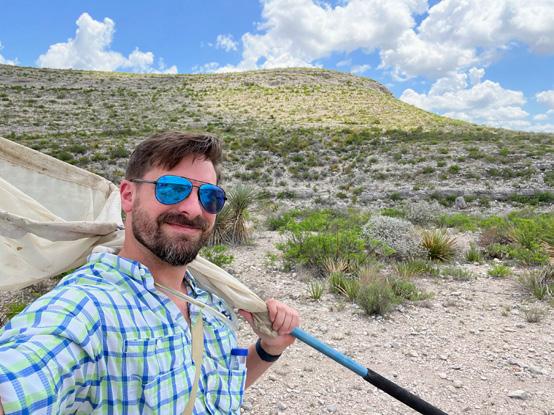
“We don't know what the larvae do,” he said. “These insects spend almost their entire lives as youngsters likely living in the soil (sometimes referred to as doodlebugs). Other members of the order (Neuroptera) are predators as larvae, including antlions (Myrmeleontidae), brown lacewings (Hemerobiidae), green lacewings (Chrysopidae) and so on. In contrast, larval stages of other moth lacewings (Ithonidae) are herbivores.”
His current research involves ants, aquatic insects, spiders and mites, but lacewings are on a long list of side projects.
“If giant lacewing larvae are also herbivores (plant eater), then perhaps they are tied to a specific host plant,” Fisher said. “If so, perhaps their eastern extirpation relates to the destruction of entire plant communities that also were extirpated from the east. It's possible an entire community of plants, herbivores, and all the parasites and predators interacting with them were all extirpated from eastern North America for reasons we still don't understand.”
“Of course, to be fair, Mike's specimen could have just hitch-hiked on a vehicle, but we won't know until we get more specimens,” he said. “Someday we may figure it out.”
5
Ray Fisher, an entomologist with the Mississippi Entomological Museum at Mississippi State University, earned his Ph.D. in entomology from the U of A.
THE GRADUATE • 2023
John Clark, Renowned Fruit Breeder, Faculty Member & Alumnus, Retires After 42 Years
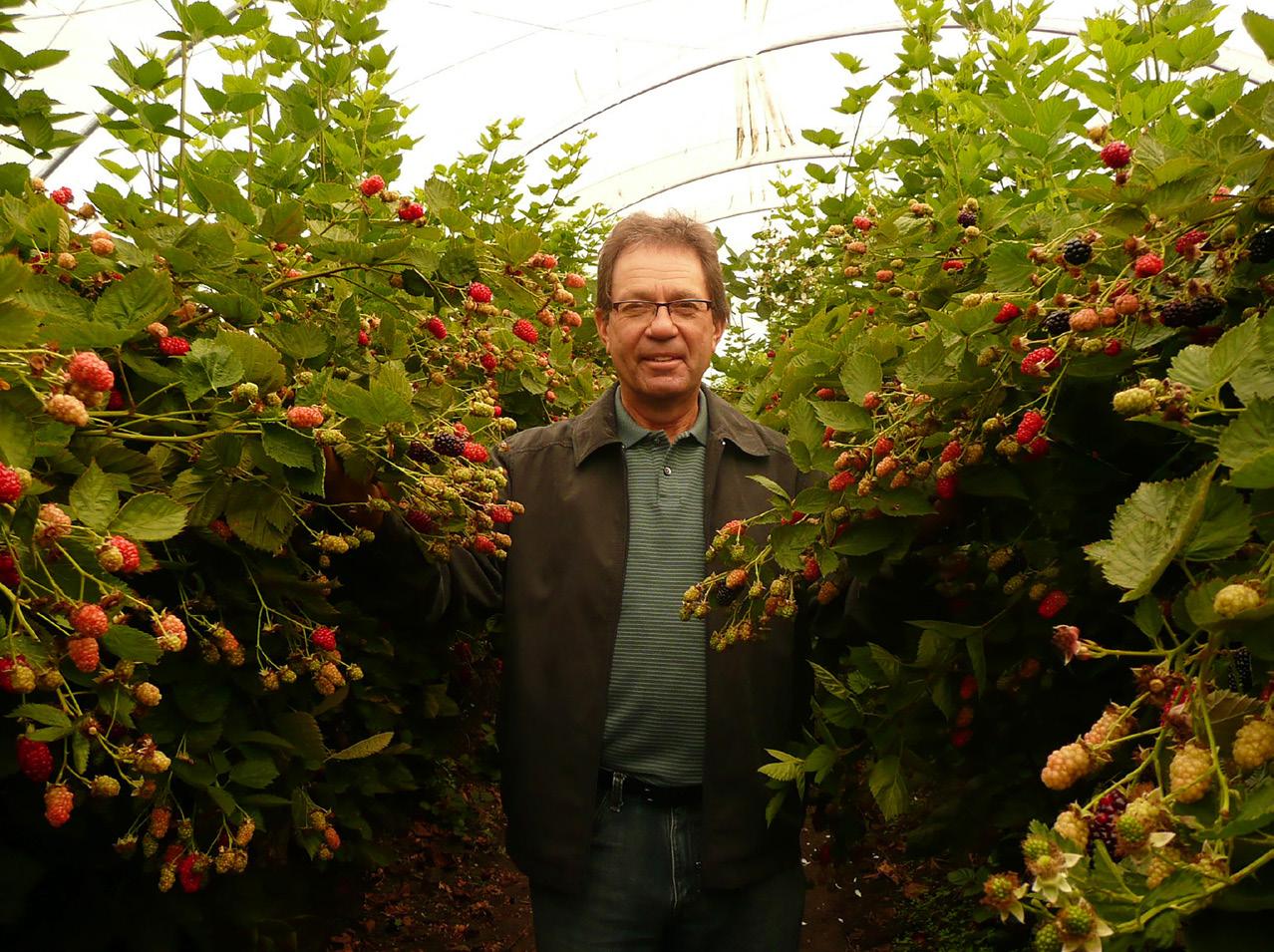 By John Lovett
By John Lovett
Take a walk through the fruit section at your local grocery store or farmers market and you’re bound to pick up a grape, peach, nectarine, blackberry or blueberry with John Reuben Clark’s fingerprints on it.
Over the course of his 42-plus year career with the University of Arkansas System Division of Agriculture and the U of A, the Arkansas Agricultural Experiment Station fruit breeder and Bumpers College Distinguished Professor of horticulture has been the developer or co-developer of 81 varieties of fruit, including the first primocane-fruiting blackberries that flower and fruit on first-year canes, Prime-Jim® and Prime-Jan®.
The primocane-fruiting trait expands the ripening season into late summer and fall for blackberries, and extends the domestic production and marketing season from one to two summer months to potentially more than six months, according to Margaret Worthington, associate professor of fruit breeding and genetics for the experiment station. The primocane-fruiting trait also expanded production to new areas of the world and facilitated organic production, Worthington added.
Clark officially retired in January.
“Dr. Clark and his program have changed the small-fruit industry both domestically and around the world,” said Wayne Mackay,
horticulture professor and department head. “He has the unique ability to imagine what the consumer desires and then create varieties that match that need.”
Mackay said Clark also successfully collaborated with the berry industry to get new varieties successfully marketed.
“This is most evident in his germplasm licensing that allowed the industry to create new flavored table grape varieties, such as Cotton Candy, that have changed what consumers expect in that product category,” Mackay said. “He is truly a game changer.”
Clark said in the fruit business, “quality is the key” because there are so many new varieties and there is competition among the fruits.
“I would not have said that 40 years ago,” Clark said. “I would’ve said the key thing is we need blackberries without thorns, and high yield.”
Having accomplished thornless blackberries and developing many other positive attributes for fruit growers, Clark’s work progressed to focus more on consumer tastes and shipping traits that extend the fruit’s viability.
The Bayh-Dole Act of 1980 enabled universities and nonprofit research institutions to own, patent and commercialize inventions developed under federally funded research programs. Although Clark’s predecessor James Moore began patenting varieties in the early 1980s,
6 #AGFOODLIFE • 2023
John Clark developed or co-developed 81 varieties of fruit over his 42-year career. (photo by Fred Miller)
Clark expanded the intellectual property program, including increased variety patent licensing as well as establishing breeding and testing agreements for the Division of Agriculture starting in the early 2000s. This emphasis later coincided with the development of the Technology Commercialization Office. Income from intellectual property fully supports the Arkansas Fruit Breeding Program, Clark said.
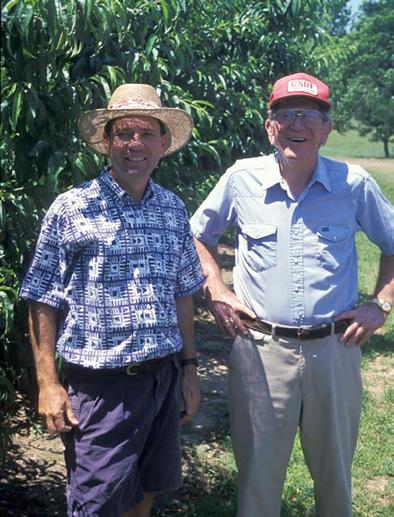
“In addition to his creative eye as a plant breeder, John has a creative perspective on the commercial and marketing side,” said Nathan McKinney, assistant director of the Arkansas Agricultural Experiment Station and a former technology licensing officer in the Technology Commercialization Office. “John was able to marry the science and the business like no other faculty.”
Many of the cultivars Clark developed have found success, Worthington said, particularly for the blackberry industry.
In addition to the varieties released directly from the Arkansas Fruit Breeding Program, Clark has also worked with collaborators at Driscoll’s, International Fruit Genetics (IFG) and other companies around the world to develop new varieties through breeding agreements using the unique genetics created in the program. Innovative table grape flavors have been moved from Arkansas into IFG proprietary varieties, with Cotton CandyTM and Candy HeartsTM being some of the most popular. The unique flavors developed in Arkansas have generated worldwide excitement in the table grape industry, Worthington said.
Although a world-renowned fruit breeder in his own right, since 2013, Clark has also gained a musical reputation for the melodic guitar instrumentals he composed to accompany the Division of Agriculture’s YouTube videos that describe new Arkansas fruit varieties. The videos were prompted by Dave Edmark, former experiment station science writer. Fred Miller, experiment station science editor and photographer, produced the original videos and recorded Clark’s music to go with them.
Clark has narrated 29 videos and provided original compositions like “Table Grape Getalong,” which accompanied the release of a group of table grape varieties. The videos have been viewed over 350,000 times.
Sometimes Clark wrote variety-specific tunes, like “Traveler” and “Dazzle,” that musically capture the traits of the fruits. For example, the song for Prime-Ark® Traveler blackberry has melodies that “travel” up and down the fretboard to underscore the variety’s “traveling and shipping” qualities. The pink wine grape Dazzle called for “flatpicking” to give it “a little zip,” Clark said.
Clark is also a regular columnist for Growing Produce and American Fruit Grower magazine. He has authored over 800 publications in his career, including nearly 400 service and popular press articles, 12 book chapters and 186 refereed publications.
Clark began his journey in plant breeding with the AAES in July 1980 as a research assistant for Moore, founder of the fruit breeding program.
Clark arrived in Fayetteville with his wife, Sharon, and their 1-yearold son, Johnathan, from their home state of Mississippi. Clark earned his bachelor’s and master’s degrees in horticulture from Mississippi State University and grew up on the J.R. Clark Dairy farm in Madison, Mississippi, where his family also grew beef cows and row crops. Farming was inherently in his constitution, he says, but fruit breeding was outside of his field until he came to Fayetteville about a year after attending a grape breeders conference at the Division’s Fruit Research Station near Clarksville. He also knew a U of A graduate student, Keith Patterson, at MSU, who told him stories about Fayetteville’s amenities like the Swinging Door music venue on Dickson Street where Patterson bartended.
With a mind to continue his education in horticulture, a job with Moore paying $12,000 a year in 1980 allowed him to pursue his doctorate by taking one class per semester as he worked at the Agricultural Research and Extension Center in Fayetteville. In 1983 he completed his Ph.D. at the U of A and became resident director of the Fruit Research Station. He continued to work with Moore on fruit breeding projects until 1996 when Moore retired, and Clark relocated to the Fayetteville campus.
Although the fruit breeding program has always focused on making improvements in varieties for Arkansas, the genetics from these developments sometimes are more valuable to growers outside the state.
“The breeding program is here to help Arkansas growers,” Clark said. “That’s our primary focus, so anything that works other places, or if the genetics have value somewhere else, that is always secondary to Arkansas growers.”
McKinney said, “the impact of John’s career is truly worldwide, but his focus on ‘Arkansas first’ has never wavered.”
“This has been a fabulous opportunity,” Clark said. “Inspiration is what contributes to things happening for you and drives enthusiasm, which expands those opportunities. I’m thankful for working for an organization that supported those opportunities. It was a lot of work, and I don’t know how many gallons I’ve sweated, but it has been really something how it all worked out.”
Over his career, Clark has been recognized with some of the highest honors from the Division of Agriculture and professional organizations like the American Society for Horticultural Science and the American Pomological Society. He has served on numerous committees and boards dedicated to horticulture and fruit breeding, and advised four Ph.D. students, 11 master’s students and 13 undergraduate students. Many have gone on to lead breeding and research programs in the public and private sectors. He has also informally served as a mentor to many young researchers and extension specialists across the world. Clark was inducted into the Arkansas Agriculture Hall of Fame in 2018.
7
THE GRADUATE • 2023
Clark began his journey in plant breeding as a research assistant for James Moore (right) in 1980.
DEWAYNE GOLDMON 2022-23 Bumpers College Outstanding Alumnus Q&A
by Robby Edwards
Pine Bluff, Ark.
B.S. in agronomy, 1985; M.S. in agronomy, 1987 Farmer; retired as Outreach Lead for Bayer Crop Sciences in 2019; Executive Director of the National Black Growers Council in 2020; Appointed by President Biden as USDA’s Inaugural Sr. Advisor for Racial Justice and Equity in 2021.
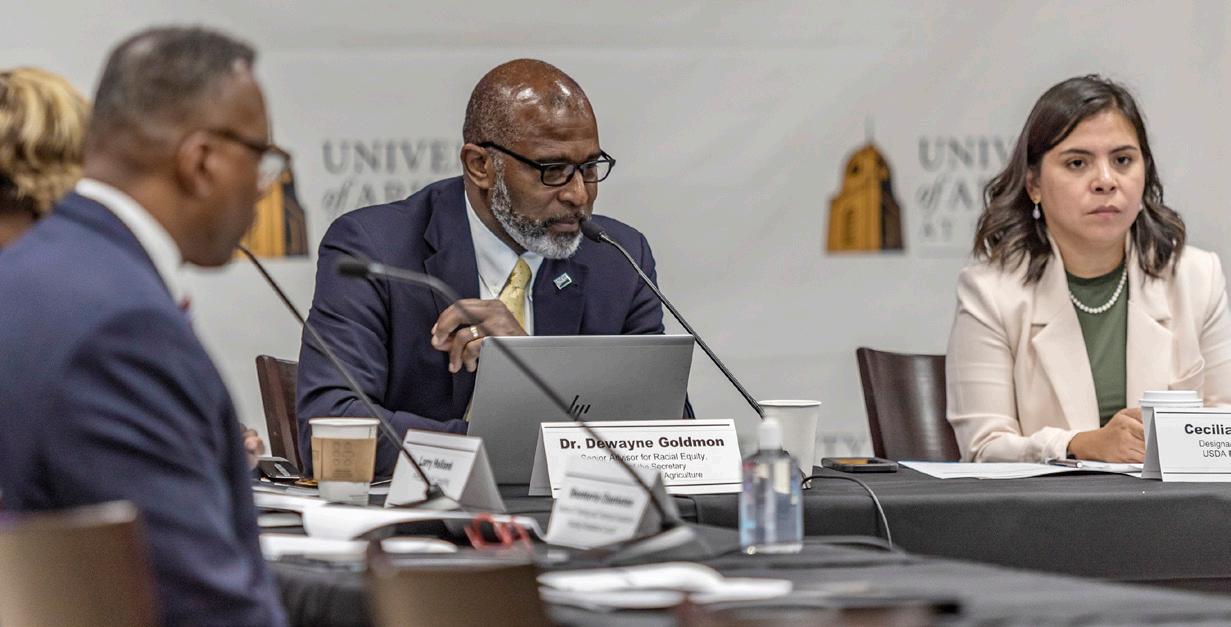
B.S. in agronomy (now Crop, Soil and Environmental Sciences), minor in agricultural business; M.S. in agronomy (specializing in soybean breeding)
How does it feel to be named outstanding alumnus?
The U of A and Bumpers College has a rich history, has made major contributions (at the state, federal and international level) to agriculture, and has trained some of the world’s leading agriculturalists. To be recognized among this distinguished group is truly an honor.
Where did you grow up in Arkansas and what was it like?
I grew up in the Hooker Community on Wheeler Chapel Road. We were in southern Jefferson County, I attended school in Pine Bluff and graduated from Pine Bluff High School in 1981. I grew up in a farming community where the rhythms of agriculture, church and rural community activities determined our daily routines. As a teenager, I discovered we were financially poor, but immensely blessed with a loving and supportive family and community.
How did you end up at the University of Arkansas?
In my senior trigonometry/pre-calculus class, I was alerted of and accepted a scholarship opportunity to study engineering at the U of A. With farming as my occupational goal, I reasoned that an ag
Dewayne Goldmon was appointed the USDA’s first senior advisor for racial justice and equity in March 2021.
8 #AGFOODLIFE • 2023
engineering degree would be a great asset, so I initially started in that department. In the orientation class, I learned more about agronomy and switched my freshman year.
How did it feel to be appointed the USDA’s first senior advisor for racial justice and equity in March 2021?

I was both surprised and honored, but as I think about my career, particularly the last half of it where I spent considerable time and effort working to understand the needs of minority and other underserved producers, I felt well-prepared.
You’ve been in this position a little more than a year. What is something you’ve learned and discovered since being appointed?
Wow, a lot! First of all, USDA is a large organization that impacts all aspects of agriculture, a fact which makes this work both interesting and complex. The opinions and needs of ALL customers have not always been incorporated into our programs, personnel and services, which has resulted in inequities across the department. However, we now acknowledge these facts and have allocated resources to address these disparities.
Are there areas of progress that have been made in the first year you feel good about?
There are several that make me proud of the work we’re doing. Redesigning programs to more equitably disburse farm programs and support, re-shaping our food production and distribution systems, selecting and supporting an Equity Commission to provide recommendations to USDA, designing programs to address climate change and addressing some prior discrimination issues head-on are areas where we have made significant progress. Collectively, these efforts have resulted in improvements for our customers and are helping us establish more trusting relationships with growers across the country.
What are some things you would like to do going forward?
While we have made significant progress, we still have much work to do. Starting in this position, my goal was to work myself out of a job; to help create a department where equity is embedded throughout its personnel and programs, and there is not a need for someone to work specifically on equity. While this seems like a lofty goal that will be difficult to attain, I have to use it as a North star to guide me. While I may not be able to fully accomplish this during my tenure, going forward I would like to see us make sufficient progress so our work will be evident long after we are gone.
How do you balance time between your farm and USDA responsibilities?
Clearly, most of my time is spent in Washington, D.C., taking care of my USDA responsibilities. I try to get home at least once a month during the growing season and to reserve a little extra time to spend on the farm during planting and harvest. My help on the farm is very familiar with the operation and is generally able to keep up with things, and I have family and friends that help out during peak times and with routine farm tasks.
Where does your passion for farming come from?
Both of my grandparents were farmers and I grew up on a small farm where we raised cotton, soybeans and vegetables (which we sold
on the fresh market). As a youngster, I hated doing farm chores, but as a curious teenager, I started asking my Dad questions about the science and methodology of farming. My Mom, Dad and 10 siblings were all actively involved in the operation and as they say, growing up on the farm will either reveal to you what you want to do or what you don’t want to do. In my case, it was the former. By the time I graduated from high school, I decided I wanted to be a farmer.
You’ve served with USDA, the National Black Growers Council, U of A Alumni Association, American Cyanamid (acquired by BASF) and Monsanto (acquired by Bayer Crop Sciences) in field research, technology development, and research and development, among others. Are there any organizations or positions you’ve enjoyed more than others?
Over the years, I’ve been blessed with many great opportunities, but have always enjoyed doing applied field research and working with farmers. I spent most of my career with Monsanto and had the chance to launch biotech products, a process both controversial and revolutionary. Working in technology development, my favorite positions were those which allowed me to demonstrate to farmers how products worked and how they could use them to improve their production. These tasks also showed me the importance of reaching farmers where they are and figuring out their unique needs and preferences. It was through these experiences that I became more comfortable advocating for farmers, eventually leading to roles in government affairs and working on grower outreach. These roles also equipped me to serve on various boards and committees where I have been able to promote agriculture and represent farmers.
...continued on page 19
The Goldmon Family at their farm in Pine Bluff, where they grow corn, rice and soybeans, and native grass seed.
9 THE GRADUATE • 2023
RICARDO EKMAY 2022-23 Bumpers College Outstanding Young Alumnus Q&A
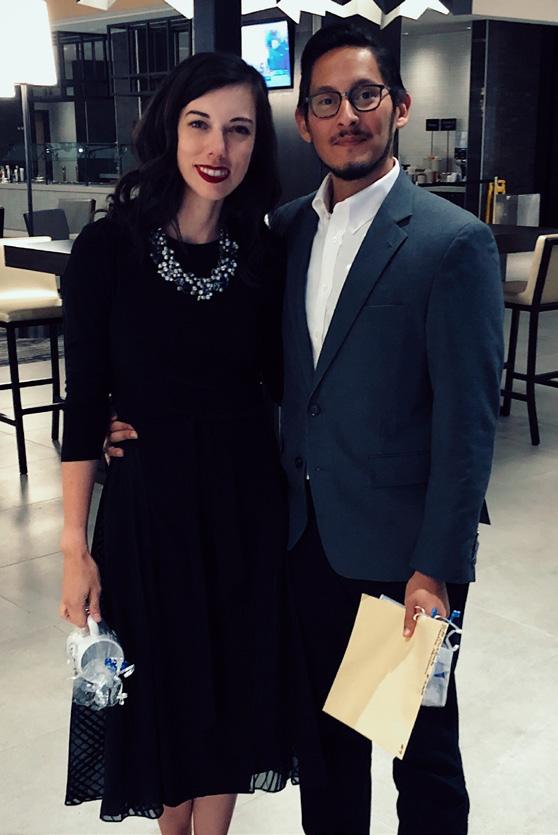 by Robby Edwards
by Robby Edwards
Durham, N.C.; from Los Angeles, Calif.
M.S. in poultry science, 2008; Ph.D. in poultry science, 2011
Sr. Vice President of Nutrition and Product Development, Arbiom, Inc.
How does it feel to be named the college’s outstanding young alumnus?
Humbling. Knowing the caliber of folks coming out of Bumpers College, it is humbling to be among great company.
Your bachelor’s degree is in animal science. Why did you pursue advanced degrees in poultry science?
I made a concerted effort during undergrad to experience several different roles in the animal sciences, e.g., veterinary medicine, and I found myself enamored with avian lab research and animal agriculture broadly. I knew poultry research was something I wanted to continue pursuing and graduate work was a logical next step.
How did you end up at the University of Arkansas?
Avian nutrition is a fairly niche field. The University of Arkansas was one of the few places that not only had a program (poultry science), but also world-class facilities and faculty.
Where did you grow up and what was that like?
I grew up in L.A. in a one-bedroom apartment in a single-parent household. My high school had over 4,000 students! I was very much a city kid, but knew I wanted to work with animals. Growing up in a city, you just assumed that meant becoming a veterinarian. I was about as far from agriculture as someone could be. As an undergrad, I majored in animal science as preparation for vet school. As I progressed through my academic career, I found myself fascinated by animal agriculture and our food system, and ultimately moved in that direction. We honestly need more urban youth engaging in agriculture and our food system.
You are heavily involved with Latin-Hispanic advocacy programs. Why is that important to you?
I understand the challenges of growing up in an environment hostile to your success. I only made it as far as I did with the support of wonderful mentors in my life and through the advancements of those who came before me. I want to make sure the next generation is not only provided equitable opportunities, but also understands it belongs.
Where were your favorite places to hang out or things to do as a student in Fayetteville or on campus?
I had a few different places over the course of my time in Fayetteville. During it’s short-lived time, I enjoyed Hogwild Pizzeria. I loved all of the wonderful hiking opportunities and regularly made my way out to Wedington Woods, Lake Fayetteville, Devil’s Den, etc.
Ricardo Ekmay and his wife Ashley attended the North Carolina Society of Hispanic Professionals’ Latino Education Celebration. He and Ashley, who is from Siloam Springs, met at the U of A.
10 #AGFOODLIFE • 2023
You are senior VP of nutrition and product development at Arbiom Inc., which focuses on alternative proteins and uses technology to bring traditionally non-food materials into the food supply chain. What is something the general public might be surprised to know about Arbiom or its products?

A healthy food system is about balance. Even the environmentally maligned cow has an ecological and societal role. Alternative proteins don’t always have this understanding. They often displace existing food supplies: robbing Peter to pay Paul. Arbiom’s vision is to tap into underutilized feedstocks that often exist outside the food chain to facilitate a more robust food system. Arbiom’s approach is additive and mimics the role of ruminants to increase the food supply rather than displace it. The other critical aspect to our food system is quality. As a society, we’ve often traded quality for quantity. Many populations face a double-burden of malnutrition wherein there is often an overabundance of some nutrients but deficiency in others. One of the many benefits of Arbiom’s approach is that you can deploy this technology in protein insecure regions to fortify food security.
You received the early career achievement award from Dow AgroSciences in 2014. What advice would you give to recent college graduates just beginning their careers?
Look for places to contribute and bring value. It’s not always about excelling at what is assigned.
What do you do for fun and to relax?
I love the outdoors, so you’ll usually find me outside hiking or camping (usually with the kids). Of course, I rarely miss a chance to watch the Razorbacks play! Though, I can’t always classify the heartattack Hogs as relaxing.
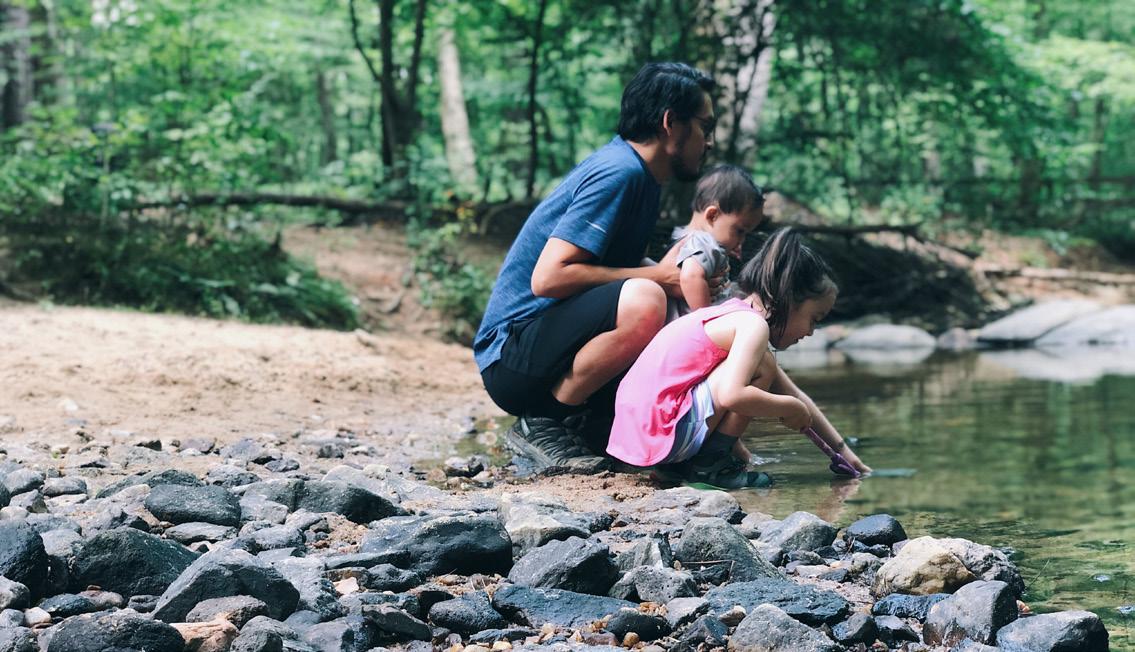
How often do you get back to Fayetteville and NW Arkansas?
At least once a year. My wife is originally from NWA, so we’ll make the trip to visit campus, see family and enjoy the region.
What do you miss most about Fayetteville?
The unique energy of the area. At this point in life, I’ve lived in California, New York, Arkansas, Indiana and North Carolina. Oftentimes, small cities start to become interchangeable.
Ekmay, with N.C. Governor Roy Cooper at the Governor’s Mansion, attended the celebration marking 2022 Hispanic Heritage Month.
Ekmay and his son Javier and daughter Sophia enjoy an outing on a creek at William B. Umstead State Park in North Carolina.
11 THE GRADUATE • 2023
All Gifts Make An Impact – Meet A Few Donors
by Robby Edwards
Gifts are used to assist students, faculty, staff and programs. There are multiple opportunities for support. Get to know a few donors here:
Support Study Abroad – Amy Bates Planned Giving – Nancy Hendricks

“Our children are out of school now and we wanted to find a way to give back,” Amy Bates said.
Bates, who earned her bachelor’s degree in marketing, general sales, merchandising and related marketing operations from Northeastern State University in Tahlequah, Oklahoma, recently provided support for study abroad. She assisted in funding a student’s international experience this summer with a one-time $2,500 gift.
“Our daughter attended Oklahoma State in hospitality and did a study abroad in Italy,” Bates said. “She came back an entirely different person. Study abroad is quite expensive, but the experience you gain, simple things like navigating airports, living quarters and shopping, that’s where she came back ahead in maturity, and my husband (David) and I wanted to be part of the solution.”
Bates, who moved to Northwest Arkansas in 2002 and created Bates Events, has worked with the hospitality management program in our School of Human Environmental Sciences.
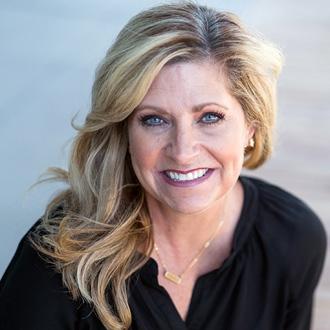
She and associate professor Kelly Way created an ambassador program, allowing students a hands-on opportunity to be immersed in the planning and execution of a high-level, non-profit fundraiser. These vetted students apply their course knowledge to this experience. More than 200 have graduated from the Bates Ambassador program.
“As first-time donors, we wanted to discover what we would be comfortable with – making an endowed or one-time gift,” Bates said. “We wanted to see what kind of impact this makes and create a threshold to see what we are comfortable with, how the process goes, what is the impact and if this is something we want to continue and leave a legacy.”
“This individual (selected for funding) came to me and said, ‘you have no idea what you’ve done for my family and me,’” Bates said. “She shared the experience with me, and that fuels our desire to ask ‘how can we do this again. Is there a possibility for an endowment?’ It’s about giving back. Every little bit helps. To that student, $2,500 was everything, and that makes me feel amazing to be part of something much bigger than just our gift.”
“It is an honor to be associated with a college bearing the name of a man of great integrity like Senator Bumpers,” said Nancy Hendricks. “A scholarship for preveterinary students will help people who help our animal friends, and let’s face it, animals are great, and so are the people who care for them.”
Those are a few reasons Hendricks, with no connection to Bumpers College or animal science, chose to create an endowed scholarship. Her planned giving gift of $50,000 established the Bellmore Trust Endowed Scholarship in Animal Science, which is named for her family and provides two $2,000 scholarships each year for students pursuing veterinary medicine.
“Education is the gift that keeps on giving,” Hendricks, who earned her doctorate in education from the U of A in 1987, said. “It can be the ticket to a better life. However, some find the financial burden of higher education to be almost insurmountable. Perhaps a scholarship will help not only monetarily, but also serve as a reminder that someone they don’t know and will never meet is interested in helping them. It’s a connection to simple humanity – past, present and future.
“My family and I have tried to do good in the world during our lifetimes,” she said. “When I pass, it will be a comfort to know a planned giving endowment will continue my ability to do good in the world even after I am gone.”
Her family always included animals, but her gift is about more than that.
“Our food supply is dependent on the health and well-being of animals, as well as the economic elements involved,” she said. “Arkansas is well known for its poultry industry. Veterinarians who focus on caring for those animals are on the front lines of protecting America’s food supply by preserving the standard of animal health we rely on.”
12 #AGFOODLIFE • 2023
Hendricks is an award-winning author and playwright. She writes for the Smithsonian and the Encyclopedia of Arkansas, is a founding member of the National Women’s History Museum in Washington, D.C., and received the Pryor Award for Arkansas Women’s History, the Arkansas Governor’s Arts Award and the White House Millennium Award, among others.
“I basically won the lottery to have been born to the parents I had,” she said. “Only later did I understand not every young person has the kind of advantages and support I did. Perhaps financial assistance through a scholarship will, in a sense, invite them to be part of my family, who are the people responsible for any success I may have had in life.”
Endowed Scholarship – Arkansas Crop Protection Association
The Arkansas Crop Protection Association, a non-profit focused on agricultural education, is a partner and supporter of multiple universities, conferences and outreach efforts across the state.
ACPA assists the UA System Division of Agriculture with its soybean and rice colleges, and funds the Henry DeSalvo and Clan Hanson scholarships at the U of A, but recently made an additional commitment to the U of A and Bumpers College.
It recently created the ACPA Endowed Scholarship with a $10,000 gift to be followed by $5,000 gifts annually through 2025 for a total of $25,000. The scholarship is for juniors or seniors majoring in crop, soil and environmental sciences; agricultural business; or horticulture.
“ACPA has provided scholarships to the U of A for over 50 years,” Executive Director Otis Howe (pictured) said. “We also sponsor the ACPA Research Conference in Fayetteville. It’s held after Thanksgiving and gives undergraduates, master’s and Ph.D.
Want To Be Like …
students in the college the opportunity to present research to our industry and their peers. The top three papers in each category win monetary prizes. I guess you could say supporting students is in our organization's DNA. Making the decision to endow a scholarship in addition to our annual scholarships just made good sense to our board and membership.”
Howe earned his B.S. (1978) and M.S. degrees (1985) from the U of A in
agronomy, now crop science. He retired from DuPont after 37 years in 2019 and worked as an independent crop consultant until 2022.
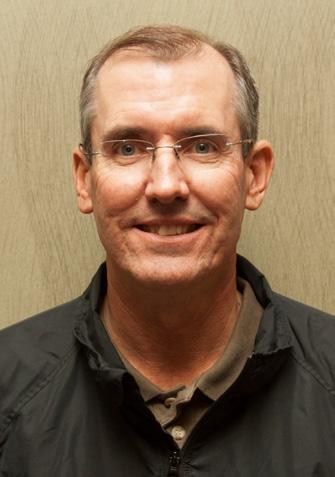
Howe, Craig Shelton, chair of ACPA’s Scholarship Committee, and committee members led efforts to create the endowment.
“ACPA membership consists of agricultural retailers, distributors, basic crop protection manufacturers, crop consultants, seed companies, U of A ag researchers, U of A Cooperative Extension and farmers,” Howe said. “We need good students well trained in crop science, soil science, entomology, plant pathology, horticulture and ag business to work in our industry. Providing scholarships is one way to encourage good students to enroll in Bumpers College and graduate with a degree in crop science, ag business or horticulture.”
…Amy? Make an outright gift, of any amount, which has immediate impact. When funds are received, they are dispersed for the designated use. You can make a gift with cash/credit card, transfer of stock or an IRA rollover.
…Nancy? Consider a planned gift through your estate. We have estate planning language available. You can designate a percentage or amount, and determine use.
…ACPA? Create an endowment, it’s the gift that keeps on giving, paying out 4% annually in perpetuity ($25,000 minimum). Donor designates use, names the endowment, and if for scholarships, determines the awarding criteria.
Some of our endowments were created more than 60 years ago.
Contact our Development Office at 479-575-2534 or extrel@uark.edu.
13 THE GRADUATE • 2023
Meet Laykyn Rainbolt
by Robby Edwards
ALUMNA & COORDINATOR FOR UNDERGRADUATE STUDENT RECRUITMENT
Laykyn Rainbolt became our coordinator of undergraduate student recruitment on April 17, and it’s a homecoming for the Marshall, Arkansas, native. Rainbolt was an honors student and earned bachelor’s degrees in agricultural communications and animal science from the U of A and Bumpers College in 2022. She was completing the Career Leadership Program with Simmons Foods when she accepted the position. Rainbolt is the initial contact for prospective students. She develops and manages a pool of prospective students, and plans and implements recruitment strategies utilizing market research and ongoing trend analysis to set goals and monitor progress. Rainbolt also manages the college’s ambassadors, a group of students who work on-campus and off-campus events. She served as the college’s lead ambassador in 2021-22. She can be reached at lrainbol@uark.edu or 479-575-2253.

As an alumna, how does it feel to be back at your college?
This is more than I could have imagined. Getting to reconnect with faculty and staff, who are to thank for my opportunities in college and the personal and professional growth I experienced during my time as a student, as now colleagues, is nothing short of incredible. They are a large part of the reason I am the person I am today. I get to share my story with students sitting in the same seat I was in not long ago. I also get to learn more about every department and the people within that I did not have the opportunity to connect with during my time as a student. I love getting to be part of the reason current students have a similar story to mine and say, “Bumpers is my home away from home,” just like I did as a student and now as an employee.
What drew you to this position?
During my time as a Bumpers College ambassador, I fell in love with connecting with students and their families during recruiting events. I had such an amazing experience in Bumpers College, and wanted to share that and give students, like myself, the courage to chase those same dreams. Both the students who grew up knowing they would attend the college of their choice and those who grew up in a community where attending the U of A was thought to be a fantasy.
I have a diverse background in agriculture. I grew up on my family’s registered angus operation, wrote newsletters for the row crop industry, worked in the poultry industry and come from two generations of seamstresses. It gives me a passion for all things ag, food and life, and a passion for everything Bumpers College offers.
Anything you want students, teachers, parents, counselors, etc., to know about you?
I’m here for them. Students, I know you have questions you feel silly asking, but I promise I asked those same questions as a student. The only bad questions are the ones you don’t ask! I want to extend the same offer to parents, counselors, junior college instructors or anyone who wants to get connected. I encourage you to reach out to me. I would love to brainstorm how we can connect and work together.
I’m just like you, future Razorbacks! I grew up in a small town, first generation to graduate from a four-year university and I relied on scholarships to be able to attend college. It is possible for you; and I, along with the rest of the Bumpers College faculty and staff, will help you do it, too.
14 #AGFOODLIFE • 2023
How can alumni, friends and supporters assist in student recruiting?
The biggest struggle we face is misinformation about the University of Arkansas. Many assume it is too big or too expensive, and you all can help break down those misconceptions. Sharing your experiences with faculty, opportunities and scholarships might just make a student see they do have a place on the Hill. And of course, share my contact info (above) with students, advisors, parents or anyone who might be interested. I hope to connect soon.
What are the top selling points about Bumpers College?
Bumpers College becomes your home away from home. The faculty, with open door policies and smiling faces, are there for you academically, but also as a friend and mentor through life.
The opportunities, from research experience to national conventions, you have the world at your fingertips if you just reach out for it. The support, scholarships and friendly support staff are two key factors about Bumpers College. A lot of students met opportunities they never dreamed of thanks to the $1.1 million in scholarships given out.
In Bumpers College, all of these come together. By connecting with faculty, they know your career aspirations and connect you to internships, career opportunities and life-changing experiences like study abroad, if you put the work in during classes and Registered Student Organizations (RSOs, clubs).
How do you plan to connect with potential students and families throughout the state?
I want to meet students in classrooms and then see them and their families on campus for a visit. I’m passionate about visiting underrepresented areas to show students they have a place in Bumpers College. In my second week on the job, I had the opportunity to attend Arkansas FFA State Convention. I was able to meet many wonderful ag teachers, and I want to visit with more groups like FCCLA, DECA, EAST and 4-H, to name a few, to show students the wide array of majors in Bumpers College. We do truly have something for everyone!
You were a transfer student. How can that help you in this position?
Being a transfer student and the first generation to graduate from a four-year university, I can relate to the fears and struggles other transfer students have. Potentially moving twice, wondering if your credits will transfer and having to figure this out on your own can be really intimidating. Most of all, transfer students have to fight the misconception that transferring “is less” than going straight to a fouryear university. I see the benefits transferring had on my academic career (made it possible) and I know choosing that route has nothing to do with your capability to succeed at a university. I want to change the stigma around transferring.
What was your favorite part of being a U of A and Bumpers College student?
This is going to seem like a biased answer, and maybe it is now, but my favorite part of being a Bumpers College student was being a student ambassador. Getting to meet prospective students and their families, and traveling to recruiting events was so much fun and also humbling at the same time. Now I get paid to do that full time!
Honorable mentions are traveling with animal science to national conventions like NCBA and the ASAS Southern Section annual meeting, and undergraduate research in the honors program. The opportunities to explore new areas and make connections with faculty were incredible.
What do you do for fun?
I love to be outside with my two dogs hiking, floating the river or playing fetch at the park. Growing up 10 minutes from the Buffalo River on a cattle farm, my happy place is outside with a four-legged animal of some sort.
As an ambassador, you were involved with many events. Did you have any favorites?
Ambassadors get to help with so many great events, but my favorite as a student ambassador would have to be National FFA Convention. The sheer number of students I got to meet and hearing about where they were from made it my favorite!
Anything else to add?
I want to add a call out to teachers, advisors, leaders or instructors. Send me an email to chat. Whether it’s to schedule a group visit (highly recommend – we’re doing some fun stuff), classroom visit or to brainstorm how to get your students connected, reach out. If I don’t have the answer, I’ll find someone who does.
Anything you want our alums to know about you?
I would love to connect. If you’re ever in the area, I’ll buy your coffee if I can have an hour to pick your brain about your hometown, your journey to the U of A or opportunities to work together now. I’ll even let you pick the coffee shop!
What is your favorite aspect of student recruiting?
I love recruiting because not only do I get to connect with a wide array of prospective students and their families, but I also get to show students that anything is possible if they talk to the right people. Bumpers College has the right people to make student’s dreams come true from conducting undergraduate research on sustainability in the apparel industry to observing wildlife in Australia. Seeing the students light up when they find the perfect major and career path is incredible because I remember when I learned about so many opportunities in Bumpers. I clearly couldn’t choose just one so now I get to talk about them all!
So many students do not think attending college is an option for them, but I want to show all students that there is a place for them if that’s an option they would like to pursue.
photos by Micayla Blair
15 THE GRADUATE • 2023
Meet Jacquelyn Wiersma-Mosley

ASSISTANT DEAN
by Robby Edwards
Jackie Mosley, as of Dec. 1, became assistant dean, but she’s no stranger to the college. Mosley is a professor of human development and family sciences in our School of Human Environmental Sciences. She is known across campus and by major employers for her skills and abilities as a trained administrator in the Intercultural Development Inventory. Last year, she became the first U of A faculty member to earn a national teaching award from the Association of Public and Land-Grant Universities, winning the U.S. Department of Agriculture Excellence in College and University Teaching Awards for Food and Agricultural Sciences.
What are some things the college has done well to promote a diverse culture?
Bumpers College is the only unit on campus where all faculty/staff were required to take the Intercultural Development Inventory (IDI) and participate in an online training on cultural competence.
The creation of the ALSEA program (Arkansas Lighthouse Summer Enrichment Academy), which focuses on seventh and eighth graders visiting with our outstanding faculty in their disciplines, focuses on AGRI-STEM sciences and applicable skills for future success.
What are some of your plans going forward?
No. 1, advancing student success, such as supporting and recruiting underrepresented students, partnering with industry for potential internships and career opportunities, implementing the annual ALSEA program each summer, and strengthening our pathway program for JR MANRRS and MANRRS by partnering with schools and agencies in NWA and across the state.
No. 2, focusing on research and scholarship, seeking funding to focus on student experiences and opportunities, including scholarships.
No. 3, being an advocate and resource for our students, faculty and staff, and college leaders, such as helping with recruitment, networking, mentoring and assisting with departmental strategic plans.
As advisor to U of A's chapter of Minorities in Agriculture, Natural Resources and Related Sciences, what do you want to accomplish through this club?
When Dr. (former dean, Deacue) Fields asked me to be the faculty advisor in 2021, there were approximately three active students, and we met each month over Zoom during the pandemic.
Our first goal was to recruit additional members and increase our outreach and message regarding what MANRRS is and how it can impact our students. In April, I led a group of 17 students representing the U of A to the National MANRRS Conference in Atlanta; all funded thanks to a Tyson Foods sponsorship. It was definitely a proud moment.
My main goal is to continue supporting and uplifting our students with internships, scholarships, jobs or graduate school opportunities, or by simply listening to issues that might come up during their time here.
You’ve been part of the relationship with Arkansas Lighthouse Charter Schools in Little Rock and Jacksonville. What is that about?
Through my relationship with Lighthouse and Wendell Scales (director of innovation), we’ve partnered together in creating the AR CommUniversity program. The ultimate goal of AR CommUniversity is to create AGRI-STEM curriculum and outreach programs to increase the number of underrepresented students pursuing agricultural degrees and entering the agriculture workforce in Arkansas.
AR CommUniversity is a multidisciplinary and collaborative partnership of Bumpers College, U of A MANRRS, and community partners such as Arkansas Lighthouse Charter Schools, JR MANRRS, Discovery Farms, the Rice Research Center (UA System Division of Agriculture) and Crystal Bridges Museum of American Art.
AR CommUniversity holistically supports and expands K-8 underrepresented students’ knowledge and experience with agricultural sciences in Arkansas, and focuses on developing successful recruitment and retention programs aimed at students from historically underrepresented backgrounds (African American/ Black, Indigenous/Native American, Asian, Hispanic, multiracial). It creates immersive experiential curriculum for underrepresented students through the ALSEA and provides mentorship opportunities in partnership with U of A MANRRS, AR JR MANRRS and Lighthouse K-8 students. We were able to create the very first JR MANRRS chapter in the state with Lighthouse, and we have goals to create more across Arkansas.
Why is Bumpers College a great place for all students?
Bumpers College, and the U of A, is the primary land-grant university in Arkansas and it provides high-quality research-based programs and educational resources with the goal of improving the lives of students, families and communities in the state.
It can be summed up quite well in our mission statement: The mission of the Dale Bumpers College of Agricultural, Food and Life Sciences is to improve the quality of life for Arkansans by preparing students for successful careers, conducting impactful research, promoting an inclusive and diverse culture, and sharing knowledge to promote viable food and agricultural systems, sustainable environments, healthy families and vibrant communities.
16 #AGFOODLIFE • 2023
Meet Dan Miller
DIRECTOR OF DEVELOPMENT AND EXTERNAL RELATIONS
by Robby Edwards
Dan Miller, on June 26, began serving as our director of development and external relations. He spent the previous eight years as senior regional resource development director for The Salvation Army of Arkansas/ Oklahoma. In that time, accomplishments include top fundraising rankings within The Salvation Army’s major giving program, raising nearly $17 million for Arkansas communities over the last eight years. Miller has managed individual, foundation and corporate donor cultivation and stewardship, and spearheaded needed capital improvement fundraising projects with Benton and Washington counties.
As director of development, what will you be doing?
My role is to connect our supporters to the causes they love. By that we help alumni and donors unite their passions with our programs. Whether our donors are alumni, industry leaders, corporations or foundations, we are here to ensure they can easily benefit, sustain and grow Bumpers College’s amazing programs through their support and gifts. Our goal in this is to always honor and support our donors and alumni so that they continue to feel connected and valued in our mission, programs and service to our students.
What drew you to a career in development and to this position?
To me, development is all about connecting with people and building relationships. That’s why I like working in this field. I like people and I love connecting them to their passions and interests, especially in unique and creative ways. Bumpers College is such an amazing place and the more I learn about it, the more excited I am getting about being able to work in a place with world-renowned research programs, amazing faculty and staff, and the countless positive accomplishments of our students and alumni.
What is your main goal for Bumpers College?
I have two goals: to tell our alumni, supporters and the world our story. I am excited to be an ambassador of all the amazing things we do here; secondly, my goal is to build greater support for our students and our vital programs. This is accomplished by telling our story.
What is the most rewarding part of your job?
Having the ability to connect with our alumni, donors and team to shine a light on the amazing work that Bumpers College is accomplishing to benefit Arkansas and beyond.

How can our alumni, friends and supporters assist in development?
First, you can share your experience with others, talk about your time here and why it was important and continues to be important to you. Secondly, you can reach out to our office, and we will be happy to connect and discuss personal ways you can help that fit your needs and are compatible with your availability (extrel@uark.edu or 479-5752270).
What is something you want current and potential supporters to know about you?
I love being outside. My wife (a U of A alumna) and I met guiding wilderness canoe trips in the Minnesota and Ontario wilderness.
What is your favorite way to connect with people?
In-person. I really enjoy getting to sit down with someone to get to know them. I want to hear their story and learn about who they are.
17 THE GRADUATE • 2023
Meet Janet Collins
by Robby Edwards
DIRECTOR OF CAREER INITIATIVES
Janet Collins, who had spent the previous 18 months as Bumpers College’s career counselor, was named director of career initiatives on June 1. Collins will collaborate with faculty, staff, students and employers to coordinate and communicate career education and readiness opportunities.
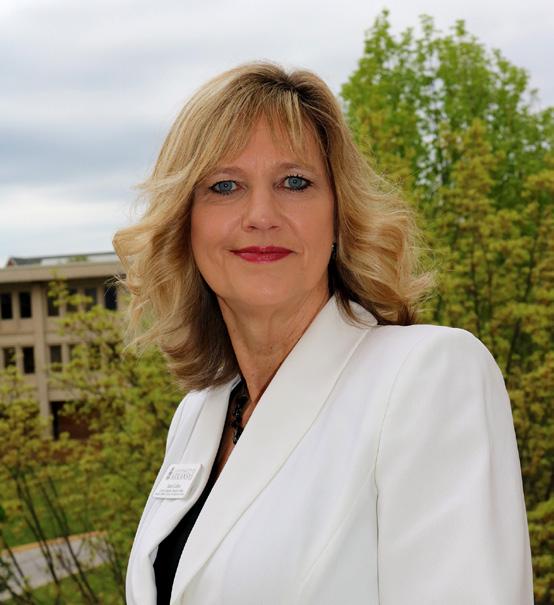
Why should employers hire Bumpers College graduates?
Our students graduate with industry-relevant skills, are known for having a strong work ethic, trained to work effectively in teams and collaborate with others, and are versatile and can adapt to different industries and work environments.
What should employers know about our students and programs?
Our college provides hands-on training and experiential learning opportunities that prepare students for the real-world challenges of their chosen field. Bumper College students are taught to be self-starters, critical thinkers and problem solvers. Our programs emphasize professionalism and ethical behavior in the workplace and incorporate opportunities for students to practice those skills.
How can alumni, friends and supporters assist in employer relations?
Alumni, friends and supporters can be valuable partners in building strong college-employer relations.
They can refer potential employers to the college's career services office. This helps increase the number of employment opportunities available to current students and recent graduates.
They can provide internships and job shadowing opportunities. These experiences help students gain valuable hands-on experience, build their resumes and make important industry contacts.
They can network by connecting the college to employers in their professional networks. Networking creates new opportunities for students and graduates to expand their social capitol and connect with potential employers.
They can mentor to offer guidance on career paths, job search strategies, and provide industry-specific knowledge and advice.
I want to ask alumni to create a profile on RazorLink (https:// razorlink.arkansasalumni.org/v2) through the Arkansas Alumni Association. This is a U of A campus community career monitoring platform. It creates a sense of belonging by bringing together alumni, students, faculty and staff, and gives students access to professionals who are offering to help students with advice, tips and in other ways.
How can business owners, hiring managers or anyone with connections to job openings and internships get involved with you and our students?
They can visit the Career Connections website (https://career.uark. edu/) and the Employers page: (https://career.uark.edu/employers/).
They can also contact me directly by email (janetc@uark.edu) or phone (479-387-3801).
18 #AGFOODLIFE • 2023
DEWAYNE GOLDMON cont...
You have recruited students from the Arkansas Delta to Bumpers College. Why is that important to you?
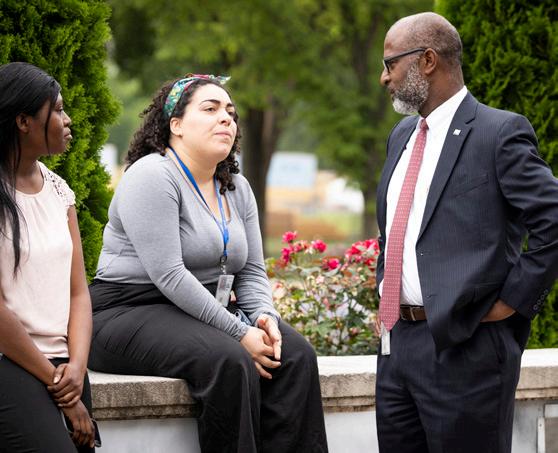
Agriculture is a very diverse field with limitless opportunities. Recent estimates show an annual shortage of over 22,000 qualified graduates to fill the nearly 58,000 positions in food, agriculture, natural resources and the environment. Workforce shortages have persisted for a long time and I would like to see students from Arkansas get prepared to compete for these good careers. I have enjoyed working with my department (CSES), college and the University to inform students about these positions and convince them to enroll at the U of A. Another advantage of the Arkansas Delta is that it remains a rich source of diverse talent for world agriculture.
What would you say to high school students to encourage and help them feel comfortable at a larger university in a bigger city?
When I was a student at the U of A, the enrollment was about half the size of its current numbers; yet it seemed huge at the time. I quickly learned there were several smaller “communities” within this large campus, including my dorm, academic department and fraternity. These smaller groups allowed me to break the U of A down into support groups that made my experience a lot more personal and meaningful.
Any favorite memories about your time as a student in Fayetteville?
Lots of favorite memories, some I dare not mention! As a freshman, we beat the No. 1-ranked Texas Longhorns, 42-11, in Razorback Stadium and I was able to witness exuberance and pandemonium up close and personally. I remember being a minority assistant and providing support to other minority students to help them be comfortable in a predominantly White environment. I later served as a resident assistant and helped young men on my dorm floor get resources and support they needed to have a successful experience. I remember the AIDS virus becoming an epidemic and all of the Black Greek organizations combined to host a fundraising dance and concert, with all contributions going to fight this lethal disease. I also recall coming of age as I transitioned from undergrad to graduate school, and starting to feel a sense of responsibility, accepting the sobering fact that the decisions I made directly and uniquely impacted my future. My initial experiences with agricultural research started as a work-study student in the agronomy department and eventually led me to pursue a graduate degree, where I began to establish good working relationships with fellow students, faculty and industry leaders.
As a student, what were your favorite places to hang out in Fayetteville or on campus?
Coming from a big family (10th of 11 kids) and living in the country, meal time was always special. In college, class schedules made it difficult to have long encounters for breakfast and lunch, but dinner was different. I thoroughly enjoyed hanging out with my friends over supper in Brough-Commons dining hall. The Memorial Union was a great place to grab a snack, hang out between classes and party on the weekends. The HPER building was finished while I was there and replaced the old men’s gym as a great place for pickup basketball games and swimming. I recall attending church services
at St. James Baptist, getting rejuvenated every now and then. And of course, hanging out with my fraternity brothers of Omega Psi Phi, regardless of where we were, was always special.
What are the biggest challenges for farmers in particular and agriculture in general?
Farming has always been a challenging profession, and this is certainly no different today as producers manage cultural practices, pest control and compliance with environmental regulations. While technology has enabled farmers to be much more efficient, deciding on the right mix of equipment, production practices and labor is a constant struggle. In today’s agricultural systems, planning is critical because with thin profit margins, it can be difficult to work your way out of a poor decision. Additionally, climate change is real and we have to figure out how to maintain or increase our production in an environment that is hotter, drier and subject to more weather variation. These challenges impact all of agriculture, especially as customers are changing their diet preferences and requesting more information on who produced their food and the production methods used.
What do you do for fun and to relax?
I like traveling (especially across rural America), reading, and spending time with family and friends.
If you weren’t a farmer, what would you do for your career? You know, if I weren’t a farmer, I would probably work for one or do something in the agricultural profession.
Goldmon’s advice for young farmers is partner with an experienced farmer to learn more about the profession; get a good education (strongly recommends the U of A) to get a good grounding in the science and business of agriculture; and be prepared to work hard, advocate for the profession and enjoy a good way of life.
19 THE GRADUATE • 2023
Bumpers College YEAR IN PICS
1. Arkansas Secretary of Agriculture Wes Ward (far right) was the guest speaker for the inaugural AgX Talks hosted by honors students in the Communicating Ag to the Public class. The class focuses on technical writing, public relations and media relations writing, campaign planning, public speaking and various mass media communication techniques, including print, broadcast, electronic and social media. It’s taught by Jefferson Miller in the Department of Agricultural Education, Communications and Technology. Ward, a two-time U of A graduate, gave an overview of current agricultural events in Arkansas. He discussed the Farm Bill, and shared with students the value of communicating agriculture to those not in the industry about issues and keeping them informed. Ward earned his master's degree in agricultural economics as well as his law degree from the U of A

3. The U of A poultry judging team placed second overall in the nation in the 56th National Collegiate Poultry Judging Contest then won the USPOULTRY Foundation Ted Cameron National Poultry Judging Contest in the spring. The first competition consisted of divisions in which judgers evaluate poultry and poultry products for quality. Division I was live bird assessment, and Division II was egg and meat product evaluation. The USPOULTRY contest consisted of grading eggs and poultry carcasses. The team is coached by Dennis Mason and Amanda Bromley. (photos by Jessica Wesson)
4. A year after winning the Division II reserve championship at the Stock Horse of Texas World Show, the U of A ranch horse team won the overall Division II collegiate title. Teams enter four riders in four events — ranch pleasure, ranch trail, working cow horse and reining — and riders compete in two rounds of each over three days. Individually, Jessica Bookout won the reserve allaround championship. Britnee Lynch was sixth; Kate Henderson, 11th, and Max King, 24th. The team, made up of animal science majors, is coached by Jordan Shore and Sidney Dunkel.
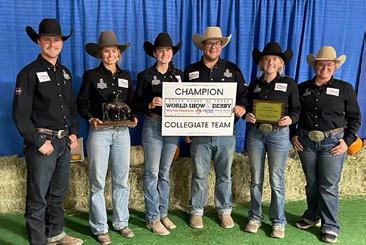

2. A graduate in food science, Sergio Herrera (center) is now an executive chef at Tyson Foods. A first-generation student whose parents are immigrants from El Salvador, he grew up in Springdale and was always interested in food and culinary arts. Since graduating, he has given back to the community. In 2019, he visited a culinary class in career and technical education at Bentonville West High School. Audra Weeks, the instructor, hosted as he discussed science, food safety and food sensory in creating a desirable product. In November, Herrera joined food science’s Rosa Buescher and Travis Hester (left), owner of Eat My Catfish local eatery, at Fayetteville High School. Herrera provided a cooking demo, shared his background, and how diversity and hard work led to success. The students, taught by Richard Bell (right) are part of a new program offering up to 30 college culinary credits to FHS and other local high schools. Herrera encourages students to find love in culinary, food science, business and education. (photo by Rosa Buescher)

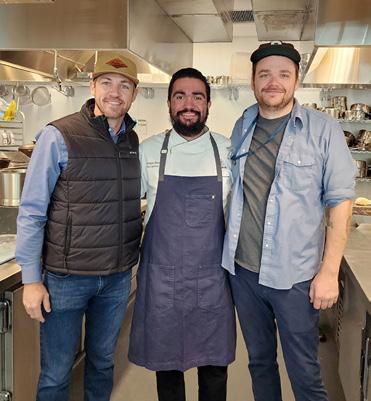
1 2 3 4 20 #AGFOODLIFE • 2023
Bumpers College YEAR IN PICS

5. The Association of Public and Land-grant Universities honored four public university faculty last fall with national teaching awards recognizing excellence in agricultural sciences teaching and student engagement, including Jacquelyn Dee Mosley (right, with Associate Dean Lona Robertson). Mosley received the USDA Excellence in College and University Teaching Award for Food and Agricultural Sciences. The U of A has had regional APLU award winners, but Mosley is the first national recipient. Mosley is a human development and family sciences professor in the college’s School of Human Environmental Sciences. In her 12 years, she has taught eight different classes, including four she developed and two for online education. After becoming a trained administrator in the Intercultural Development Inventory, she developed a new general education course for the entire campus. She has led cultural competence training for more than 2,000 students, faculty, staff and campus leaders in 60-plus trainings, as well as the leadership team of Tyson Foods and the U of A System Division of Agriculture. Her teaching has been recognized with a national Cognella Innovation Teaching Award in Family Science, the U of A Teaching Academy New Fellow and Jack G. Justus Award for Teaching Excellence in Bumpers College.
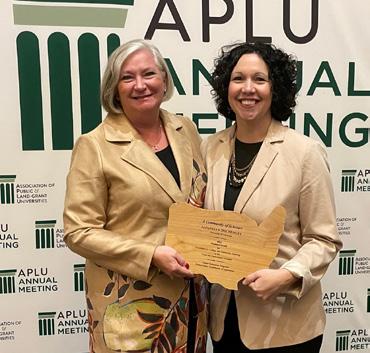
6. U of A’s soil judging team, made up of students in crop, soil and environmental sciences, placed sixth in the country at the National Soil Judging Contest and was second in the teamjudged pit portion. Competing among the top 23 teams and 92 individuals in the country, both finishes are the best for Arkansas in the national competition in 21 years. The team, Katie Jansson, Sophie Sward, Jonathan Brye, Claire Meara and Lauren Gwaltney, is coached by University Professor Kris Brye. Led by three top 10 finishers, they claimed the Region IV championship in the fall. Jansson won the overall individual championship, Brye was second and Gwaltney ninth. U of A appeared in the national contest for the 11th time in 13 years.
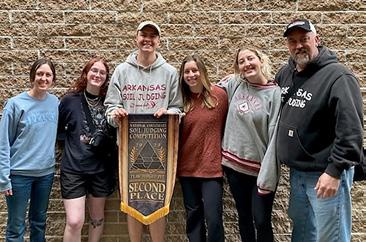
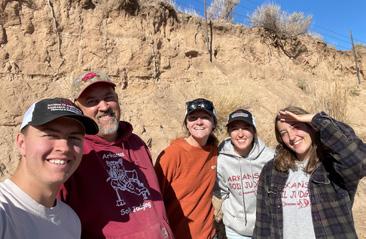
8. To better connect students to on-campus resources and strengthen an already strong graduation rate, Bumpers College added an academic advisor to its Student Services team and changed its advising model. Regular interaction with advisors is crucial in keeping students on track toward graduation and, sometimes, enrolled. The Student Services Office in the Waldrip Student Center offers a waiting area for students to study or relax and the opportunity to visit with staff members regarding changing majors or minors, graduation, career services, scholarships, personal concerns and more. The college's advising team works out of the Waldrip Student Center, headed by Lucas Simmons, senior academic adviser and student experience coordinator, and Jody Davis, director of student records. Working with Simmons on the college's advising team are Davis and professional advisers Melinda Dunlap, Cathy Hamilton and Abbie Tanner. The group also assists students in connecting with the Career Development Center, financial aid, personal wellness, tutoring, counseling and more, and is also available by appointment. (photo by Robby Edwards)
7. The U of A weed science team closed last summer by winning the Southern Weed Science Society Southern Weed Contest in Memphis. Competitors rotated to different stations where various scenarios were staged. From herbicide symptomology and calibration, to weed identification and crop/weed situation recommendations, students were tested and scored in each area. Team members, all in the Department of Crop, Soil and Environmental Sciences, were Tristen Avent, Mason Castner, Casey Arnold and Juan Camilo Velasquez. Avent won the individual graduate student category with Castner and Arnold finishing third and sixth, respectively. Avent also won the calibration and herbicide symptomology categories. Maria Carolina de Carvalho Rocha Souze, an exchange student, won the undergraduate division. The team is coached by Jason Norsworthy, Distinguished Professor and Elms Farming Chair of Weed Science, and Nilda RomaBurgos, professor of weed physiology and molecular biology.
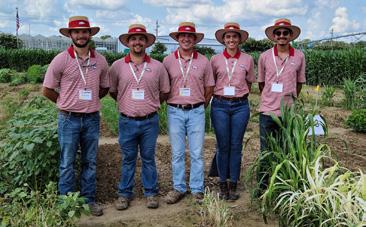
5 6 7 8 21 THE GRADUATE • 2023
Bumpers College YEAR IN PICS

9. Students in apparel merchandising and product development were invited to a pre-opening lecture and tour of the Crystal Bridges Museum of American Art Fashioning America: Grit to Glamour exhibit. It was dedicated to fashion and the firsts to present American fashion as an emblem of global visual culture, amplified by movies, television, red carpets and social media. The exhibit included this dress, designed by AMPD graduate Alyssa (Graves) Ibos. (photo by Stephanie Hubert)
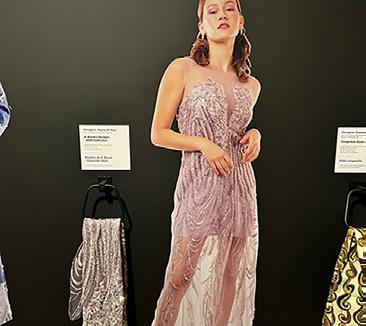
10. Anna Mathis, an honors junior, was awarded the prestigious Harry S. Truman Scholarship for 2023. The scholarship provides $30,000 for graduate school and a lifetime network with other Truman Scholars, past and present. Mathis, from Valley Springs, was one of 62 scholars selected from 705 applicants at 275 institutions based on academics, leadership experiences and likelihood of becoming a public service leader. Mathis, an agricultural education, communication and technology major, has served as national FFA secretary, with the NWA Food Bank and as a mentor in the National Science Foundation-funded STEM Ready program. She is the fourth Bumpers College Truman Scholar since 2012, joining recent recipients Sam Harris in 2017, Victoria Maloch in 2016 and Mike Norton in 2012.

11. Jada Thompson, assistant professor in the Department of Agricultural Economics and Agribusiness, was interviewed last winter by KNWA-TV in Fayetteville to discuss the rising costs of eggs. Thompson is a two-time Bumpers grad, earning her bachelor's degree in poultry science and her master's in agricultural economics. Thompson’s research primarily focuses on animal health and livestock economics with emphasis on the poultry industry.
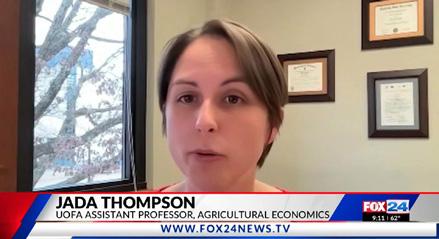
13. Arkansas Secretary of Agricultural Wes Ward and the Department of Agriculture hosted a group of students in Minorities in Agriculture, Natural Resources and Related Sciences from the U of A and Arkansas-Pine Bluff for meetings with officials and facility tours. Ward earned his master's degree in agricultural economics as well as his law degree from the U of A. Jacquelyn Wiersma-Mosley, assistant dean, is MANRRS’ club advisor. The club also received a $20,000 gift from Tyson Foods for professional development, and meeting with and mentoring junior MANRRS students across the state.
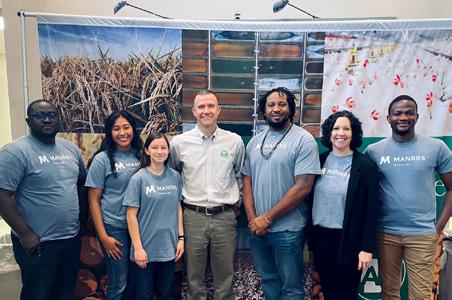
9 10 11 12 13 22 #AGFOODLIFE • 2023
12. Wendie (Wallis) Phelps (top left), Ron Morrow (top right), Dari Brown (bottom left) and Vicky Watkins (bottom right) were recognized by the Department of Animal Science for distinction and service. Phelps is the bachelor’s degree Graduate of Distinction, Morrow the master’s degree Advanced Graduate of Distinction, Brown the Ph.D. degree Advanced Graduate of Distinction and Watkins the Friend of the Department.
14. The horticulture judging team, coached and advised by teaching associate professor Garry McDonald, placed second at the American Society for Horticultural Sciences Southern Region Annual Conference. The team (Hannah Callicott, River Dean, Morgan Humphrey, Bailey Karnes, Caden Williams) was first in the vegetable crop commodities contest, and second in woody ornamental crops and floriculture crops to finish second overall. Individually, Karnes and Williams tied for first overall.
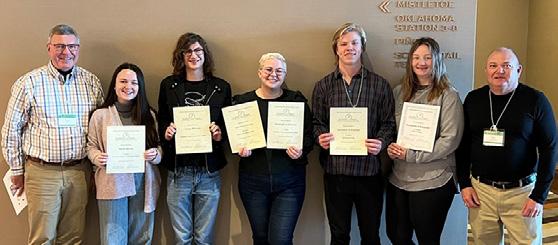
Bumpers College YEAR IN PICS
15. The equine judging team, made up of students in animal science, won the reserve overall team title at the Middle Tennessee State University Intercollegiate in March. The team, coached by Rachel Scott, was first in halter, performance and reasons divisions. The team included Josh Uptigrove, Afton Blevins, Katie Ellsworth and Myah Balnoschan. Uptigrove was fourth overall, Ellsworth sixth, Balnoschan ninth and Blevins 11th.

17.
photos) and
members of the Bumpers College Alumni Society Board of Directors, attended the 2023 student Honors and Awards Reception in April, and presented the Bumpers College Alumni Society Rising Senior Award (to Madison Estepp) and the Greg Weidemann Bumpers College Alumni Society Scholarship (to Anna Mathis). (photos by Ariel Romero)
18. Allessandro Rocchi, a senior in poultry science, was named the Frank Perdue Scholarship Student of the Year in Atlanta during the USPOULTRY Foundation College Student Career Program held in conjunction with the 2023 International Production and Processing Expo. The nationally competitive award is given to a student pursuing a career in poultry science who has excelled during college with great promise to make a large contribution to the industry. The first place student is recognized as the highest ranked graduating senior across all universities nationwide. In 2020, another Bumpers College student, Guillermo Tellez Jr. won the award.

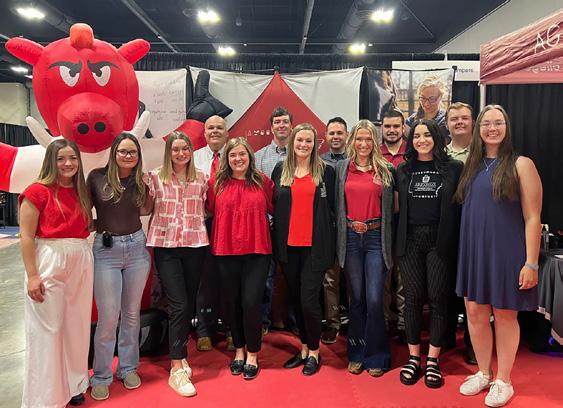

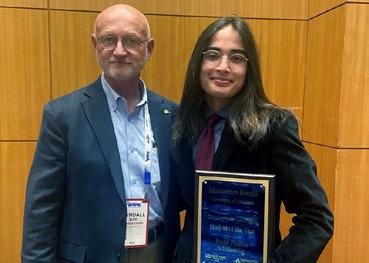 Scott Walnofer (left in
Fendley Ragland (right),
Scott Walnofer (left in
Fendley Ragland (right),
18 14 15 17 16 23 THE GRADUATE • 2023
16. Laykyn Rainbolt, our new coordinator of undergraduate student recruitment, along with several ambassadors and faculty members from agricultural education, communications and technology, attended the Arkansas state FFA convention in Hot Springs in April.
Bumpers College YEAR IN PICS
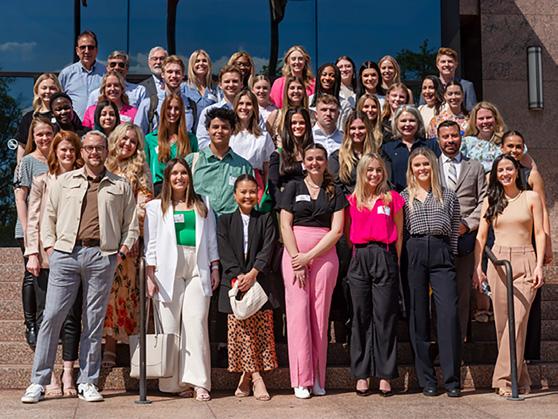
19. The U of A Women’s Giving Circle, which funds innovative projects, selected a Bumpers College initiative - Cultivating Sustainable K-12 AGRI-STEM Pathways Through CommUniversity Partnerships – to receive funding for 2022-23. The program is designed to increase the number of underrepresented students pursuing agricultural degrees and expand the community of diverse agricultural leaders in Arkansas through immersive hands-on learning and mentorship opportunities. Presented by Jacquelyn Mosley in the School of Human Environmental Sciences; Katherine Dilley, former coordinator of undergraduate student recruitment; and Wendell Scales, deputy director of innovation for Arkansas Lighthouse Academies, the proposal received $10,000.

20. Food science assistant professor Scott Lafontaine, also a researcher and scientist with the Arkansas Agricultural Experiment Station, the research arm of the UA System Division of Agriculture, has been author or co-author of several articles on hops, non-alcoholic beer production and sensory testing. The growing demand for non-alcoholic beer has spurred new research using Arkansas-grown aromatic rice to expand flavor profiles of non-alcoholic beer. Lafontaine, who investigates compounds, health benefits and other characteristics of beer, and Ph.D. student Bernardo Guimaraes are studying the health benefits of non-alcoholic beer, which is part of the planned study evaluating how qualities of rice affect beer brewing. (photo by Fred Miller)
21. Dillard's Inc. continued showing support of the apparel merchandising and product development program through several initiatives last year. Teaching assistant professor Lance Cheramie previously evaluated men's suit quality by country of origin, contrasting suits from China, Italy and the United States. Dillard's donated new suits to evaluate how quality has shifted. It also donated suits to the U of A Associated Student Government's Boss Hog Outfitters, which provides students professional clothing for career events at no cost. Assistant professor Kyuree Kim’s Fashion Brand Management class evaluated Dillard's private label's Gianni Bini's digital communication strategies and developed campaigns to increase the brand's social media presence. Dillard’s welcomed AMPD students for a day at its corporate office, meeting with VP of Product Development Gianni Duarte, viewing the men’s product development area, meeting with VP of Ecommerce and Digital Marketing Annemarie Dillard Jazic, and touring and networking with other leaders. It closed the year by participating in the Enclothe fashion show with Jazic serving as emcee and providing a pop-up shop featuring designs by model, influencer and television star Venita Aspen, who attended the shows.
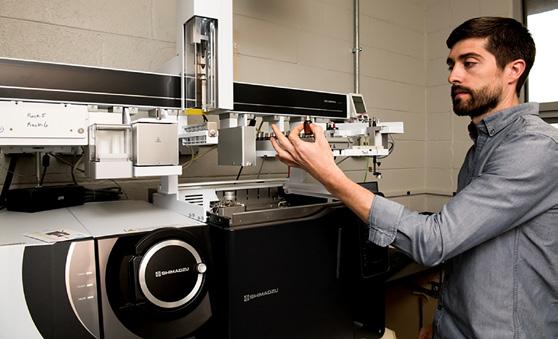
19 21 20 24 #AGFOODLIFE • 2023
Bumpers College YEAR IN PICS

(April 26, Crystal Bridges Museum of American Art, garments created and designed by students, show planned and managed by students; emceed by Annemarie Dillard Jazic; attended by model and influencer Venita Aspen with a popup shop featuring her design)
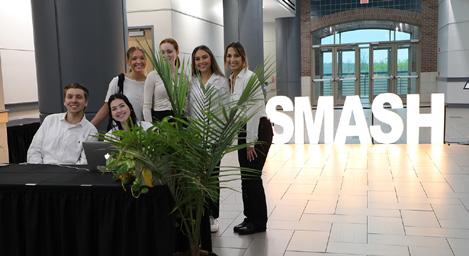
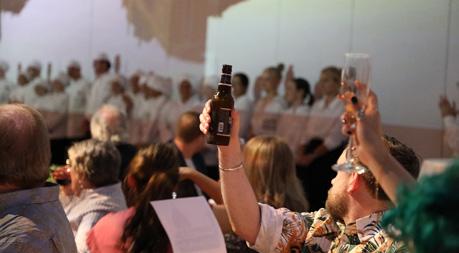
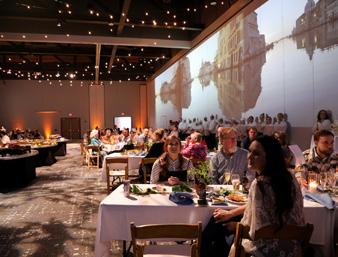


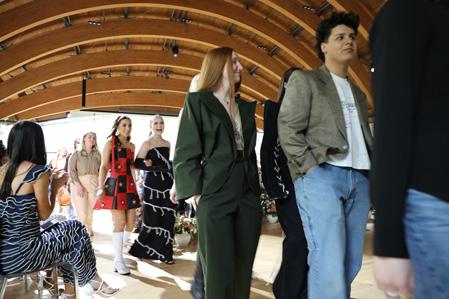
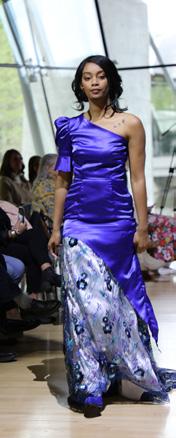

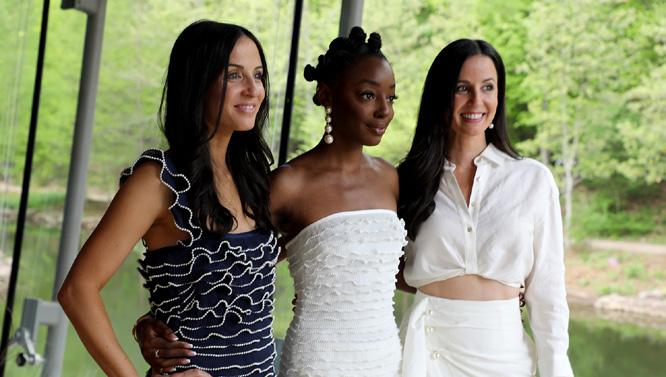 22. Enclothe: Evolve Fashion Show
23. SMASH: Benvenuto in Italia
(April 15, Fayetteville Town Center; food planned, prepared and served by students; event planned and managed by students)
22. Enclothe: Evolve Fashion Show
23. SMASH: Benvenuto in Italia
(April 15, Fayetteville Town Center; food planned, prepared and served by students; event planned and managed by students)
22 23
25 THE GRADUATE • 2023
(photos by Daniela Medina & Karli Yarber)
Bumpers College CLASS NOTES
1980s
Bert Greenwalt, MS ’80 in agricultural economics, was a Class of 2023 member of the Arkansas Agriculture Hall of Fame, inducted on March 3. He is professor of agricultural economics at Arkansas State University. A native of Hazen, Arkansas, he co-founded and directs the annual A-State Agribusiness Conference, which since 1995 has provided information on the farm economy, agricultural and trade policy, and commodity markets. He currently advises the A-State Agribusiness Club. He has been recognized with the A-State Faculty Award for Professional Service and the Jonesboro Chamber of Commerce Excellence in Agribusiness Award. During 1999-2004, Greenwalt was elected to two three-year terms as a director of the Federal Reserve Bank of St. Louis, then later served eight years as a member of the St. Louis Fed Agribusiness Council. He currently serves as a director of the Arkansas Agricultural Council. Greenwalt is a partner in his family's farm near Hazen which produces rice, soybeans, corn and winter wheat. In 2016-17, he received the Distinguished Alumnus Award from our Department of Agricultural Economics and Agribusiness.
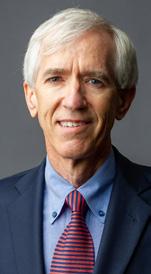
Carolyn Diane Shoemaker
BSA'81 of Fayetteville is one of the Employees of the Year for 2021 22 named by the U of A Staff Senate. She is a project and program specialist with the Office of Graduation and Retention within the Office of Student Success.
Doris G.E. Washington BSA’89 of Little Rock was appointed by the Joe Biden administration to serve as State Executive Director of the USDA Farm Service Agency in Arkansas. Washington, who earned her B.S. in agronomy, has more than 30 years experience managing governmental and public affairs initiatives impacting environmental protection, education, economic development and agriculture. She most recently was director of the National Water Management Center at the USDA Natural Resources Conservation Service.
1990s
Jody Davis
BSA '91 of Farmington received a 2022 Honors College Staff of the Year Award. She is the director of student records for Bumpers College.
2000s
Douglas LaVergne, MS ’03 in agricultural education and extension education, was named dean of the College of Agriculture, Environmental and Human Sciences at Lincoln University in Jefferson City, Missouri, in April. Lavergne is chief academic officer of the college, manages its resources, and leads in development and fundraising efforts as well as recruitment and retention of faculty, staff and students. He grew up in southeast Texas and southwest Louisiana and recalls spending his summers working in his father’s rice fields. LaVergne’s research interests focus on the importance of diversity and underrepresented groups in agricultural and extension education. Other areas of study include analyzing the needs of agricultural teachers and assessing the impact of demographic and societal changes on the profession. He was previously associate dean of the College of Agricultural Sciences and Natural Resources at Texas A&M University at Commerce.
Sandy Sehon BSHES '07 of Fayetteville is the Employee


of the Year in U of A’s College of Engineering, where she is a fiscal support supervisor.

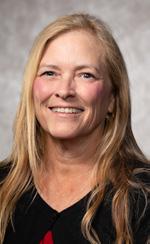
2010s
Sara Esther Jarma Arroyo MS '16, a food science doctoral student in Bumpers College, has been awarded a scholarship by the Institute of Food Technologists.
Carrie Catherine Ortel MS '18 of Fayetteville is the recipient of an American Society of Agronomy Nelson Yield Limiting Factors Graduate Students Scholarship and a Crop Science Society America Gerald O. Mott Meritorious Graduate Student Award in Crop Science.
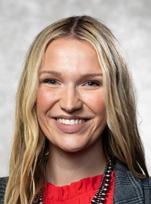
2020s
Amanda Grace Fleming BSHES '20 of Little Rock received an American Wine Society Educational Foundation/ Banfi Auction Scholarship. Fleming's research is focused on "Investigating Quality Attributes and Wine Production Methods of Arkansas Grown Grapes."
Laykyn Marie Rainbolt BSA '22 of Fayetteville was named Bumpers College’s coordinator of undergraduate student recruiting.

m – annual member lm – life member fs – former student 26 #AGFOODLIFE • 2023
Parker Johnston Straight BSA '20 MS '22 of Rockwall, Texas, is the recipient of the Award of Excellence for Best Oral Presentation in the area of physiology and reproduction at the Poultry Science Association Annual Meeting in San Antonio, Texas.
IN MEMORIAM
(July 1, 2022 – June 30, 2023)
1950s
Pat Falls Barrett BSHE '53 MS '77, Clarksville, Oct. 12, 2022.
Robert E. Boyd BSA'53, Bella Vista, June 11, 2022.
Burr E. Fancher BSA'53 MS'58 PHD'79, Albany, Oregon, Oct. 29, 2022.

Nancy Williams Froman BSHE'53, Rogers, Feb. 4, 2023.
J. Byron Grimmett Jr. BSA'53 MED'54, Waldo, Nov. 10, 2022.
Lloyd Crow Howard BSA'50, Cave Springs, March 21, 2023.
Elmer V. Krehbiel MS'59, College Station, Texas, Sept. 18, 2022.
Jo McGuire McDonald BSHE'57, Jonesboro on July 28, 2023.
Gaylon E. Miller m BSA'59, Hazen, Sept. 2, 2022.
James J. Miner BSA'53 MS'54, Pittsburg, Texas, May 12, 2022.
James Doyle Solomon BSA'56 MS'60, Clinton, Oct. 3, 2022.
William L. Stanley BSA'56 MED'64, Marked Tree, Sept. 28. 2022.
Mary Ann Pich Willey BSHE'54, Galveston, Texas, Sept. 26, 2022.
1960s
Everette H. Barman MS'69, Milledgeville, Georgia, Jan. 26, 2023.
Harry Vernon Foster BSA'68, Rover, Oct. 26, 2022.
Daniel B. Gladden BSA'65 MS'66, Little Rock, Feb. 4, 2023.
J. O. Hoggard BSA'61, Rogers, Nov. 14, 2022.
Kyung Soo Kim, MS‘63, PhD‘71, retired professor of plant pathology, Fayetteville, Feb. 8. He was 89. Kim was born in Seoul, Korea, in 1933 and raised in North Korea until fleeing to South Korea during the Korean conflict in 1950. After earning a bachelor's degree in biology from Kyung Puk National University in Korea, he earned a master's in zoology and Ph.D. in plant pathology from the U of A. He became assistant professor in what was then the Department of Plant Pathology in 1974, was appointed University Professor in 1993 and retired in 2002. Kim was responsible for administration of the universitywide electron microscope facility, and taught a course in the use of electron microscopy in biology. His research, primarily directed toward plant cell ultrastructure, with particular regard to the reactions of plant cells to virus infection, was recognized in national and international circles. Kim worked closely with colleagues in Arkansas and collaborated with others at institutions in the
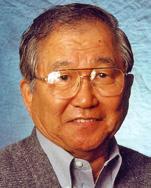
U.S., and conducted cooperative research with scientists from Brazil, Costa Rica, Canada, Puerto Rico, Great Britain, Korea, Japan, Thailand, China and Israel. He also collaborated with scientists in areas of entomology, agronomy, animal science, botany and zoology. After retiring, he was involved in teaching and research programs in an advisory capacity at Seoul National University and the Rural Development Administration in the Republic of Korea. Kim was a Fellow of the American Phytopathological Society and the American Association for the Advancement of Science, and received the U of A Alumni Association Award for Outstanding Research in 1989. Kim and his wife, Sung Boon Kim, established the Dr. Kyung Soo and Sung Boon Kim Endowed Graduate Fellowship with a gift of $150,000 in 2022. The scholarship is awarded to a graduate student in the Department of Entomology and Plant Pathology pursuing a master's degree or Ph.D., and demonstrates dedication to the enhancement of the science and field of plant virology.
Pat D. Schaefers BSHE'63, Conway, June 6, 2022. Gene Woodall MS'66, Little Rock, Sept. 6, 2022.
Jerre Max Van Hoose, BSA’63 in agricultural economics, Dec. 2. He was 84.
Van Hoose
served six years in the National Guard and spent 40 years with the Fayetteville engineering firm McGoodwin, Williams and Yates, working with communities across the state to improve their water and sewage systems. He was elected Springdale mayor in 1999 and served until 2010. He helped choose the site for Arvest Ballpark, home to the Northwest Arkansas Naturals, and worked to make the Don Tyson Parkway a reality. He also was instrumental in widening Huntsville Avenue and Wagon Wheel Road. Van Hoose held numerous leadership roles in his career, including president of the Springdale School Board, Ozark Regional Transit, the Arkansas Water Works and Pollution Control, and was a 50-year Rotary member, serving as president in 1983-84
1970s
Robert E. Allain BSA'75 MS'78, Springdale, Aug. 14, 2022.
Paul Cochran BSA'75, Portland, June 10, 2022.
Thomas Floyd Crocker BSA'75, Fayetteville, July 31, 2022.
Billy Ray Ivy BSA'75, Oklahoma City, Oklahoma, Jan. 5, 2023.
Brenda S. Knee BSHE'71, Springdale, Oct. 17, 2022.

Henry J. Layes BSA'78 MS'83, Fayetteville, May 22, 2022.
E. Dave Lee BSA'73, Fayetteville, May 28, 2022.
Worth L. Matteson III BSA'71, De Kalb, Texas, Dec. 16, 2022.
Timothy H. Mitchell BSA'78, Coconut Creek, Florida, Sept. 2, 2022.
m – annual member lm – life member fs – former student 27 THE GRADUATE • 2023
Jo Ann Senko BSHE'71, Fort Smith, Nov. 2, 2022.
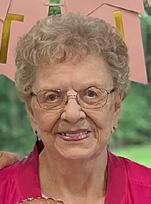
Jerry Shell BSA'79 MS'85, Leslie, June 7, 2022.
1980s
Randy Boyd BSA'85, Little Rock, Sept. 15, 2022.
Vaughn McCray Jr. BSA'85, Springdale, July 15, 2022.
James Wayman Miller BSA'88 BSE'94, Little Rock, June 17, 2022. Rita Wooley BSHE'80, Little Rock, Oct. 28, 2022.

1990s
John Rutledge Moore FS’97, Fairfield, Iowa, June 27, 2022.
2000s
William Drew Parker BSA'05, Fayetteville, Jan. 2, 2023. April Stephens BSHES'01 BSE'02, Stuttgart, Dec. 18, 2022.
2010s
Kathryn Talley FS'11, Austin, Texas, August 24, 2021.
2020s
Warren Patrick Robertson FS, Little Rock, Aug. 4, 2022.
FRIENDS
George Bradley, retired former chair of the Department of Horticulture and Forestry from 1968-91, Fayetteville, Jan. 28. He was 96. Bradley did a lot of work throughout Arkansas with regard to tomatoes, rice, spinach and fruit. He also served as a consultant

E-mail Your Class Notes
Send updates to the Office of External Relations, extrel@uark.edu, fax to 479-575-6890 or mail to:
to international governments for increased crop production in developing countries. He was a WWII veteran, having served in the U.S. Army in both Japan and Korea. Bradley received his undergraduate degree from University of Delaware and his Ph.D. in horticulture from Cornell in the 1950s and began his career as assistant professor at U of A in 1955 upon graduation. Many of his family members attended the U of A, including wife Freda, son Steven, daughter Susan, and grandchildren Blake and Matt Bradley and Cassidy Pospisil Anderson.
Pauline Whitaker, namesake of the Pauline Whitaker Animal Science Center,
Fayetteville, March 25. She was 93. Whitaker and her family moved from Abilene, Texas, to Northwest Arkansas in the early 1960s. Her husband, Don, ran the first Walmart store in Rogers, and Pauline was the cashier who completed the store's first sales transaction. Later in life, Whitaker founded the Whitaker Family Foundation to support healthcare and education efforts. The center opened in 1999 and has hosted countless classes, demonstrations, conferences, competitions and even the world-famous Lipizzan stallions, which showed their airs above the ground. Today Whitaker’s name can be found on educational and hospital campuses across northwest Arkansas, as well as the Pauline Whitaker Parkway in Rogers.
m – annual member lm – life member fs – former student
You
E202
Building 1 University of Arkansas Fayetteville, AR 72701-1207
Bumpers College Alumni Society Office of External Relations
AFLS
can also email notes to the U of A Alumni Association at records@arkansasalumni.org
28 #AGFOODLIFE • 2023

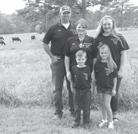


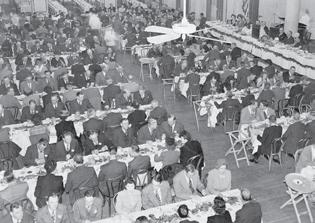
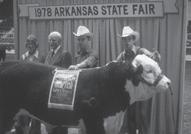
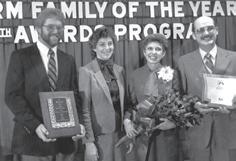
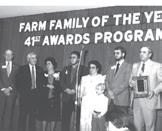
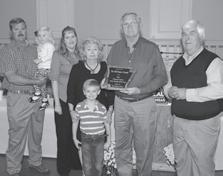



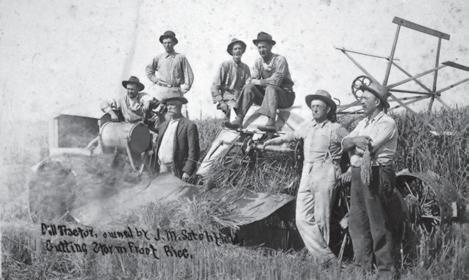
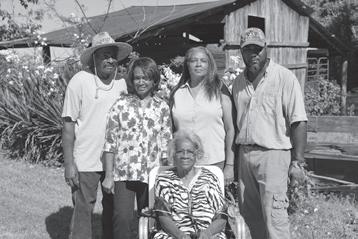
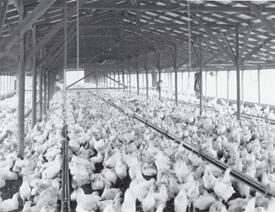




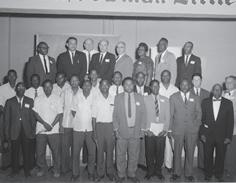

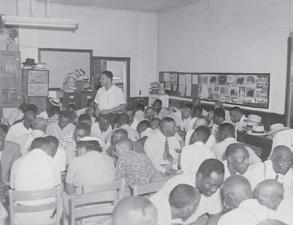



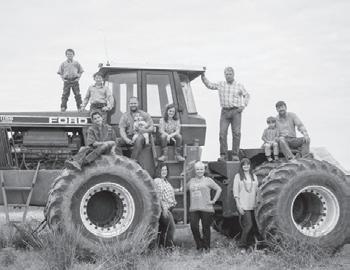
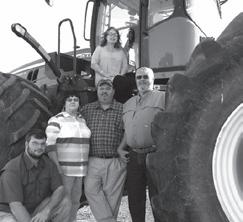
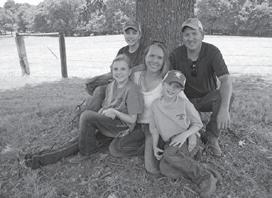


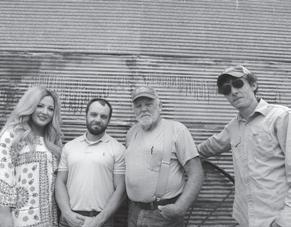

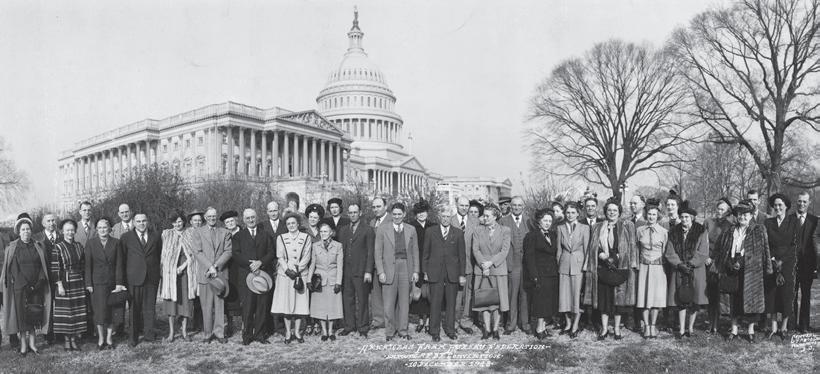


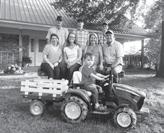

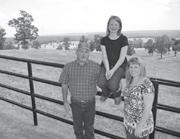
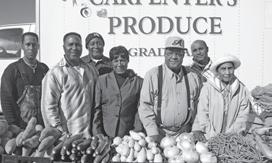

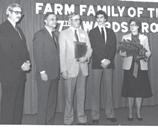
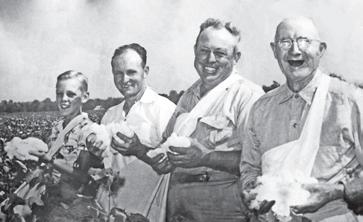


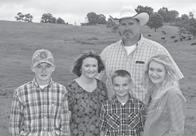


Representing Farm Families Yesterday, Today and Tomorrow arfb.com
Bumpers College Alumni Society
E219 AFLS Building
1 University of Arkansas
Fayetteville, AR 72701
#AgFoodLife
WE HOPE TO SEE YOU!
BFF Tailgate
(Bumpers Friends & Family)
BYU, Sept 16
Kickoff 6:30 p.m.
Tailgate 4 p.m.
Bumpers College
Alumni Society
Tailgate Mississippi St., Oct. 21
TBA
CONNECT WITH STUDENTS
If you are a Bumpers College graduate and want to help mentor current students, create a profile on the RazorLink page through the Arkansas Alumni Association.
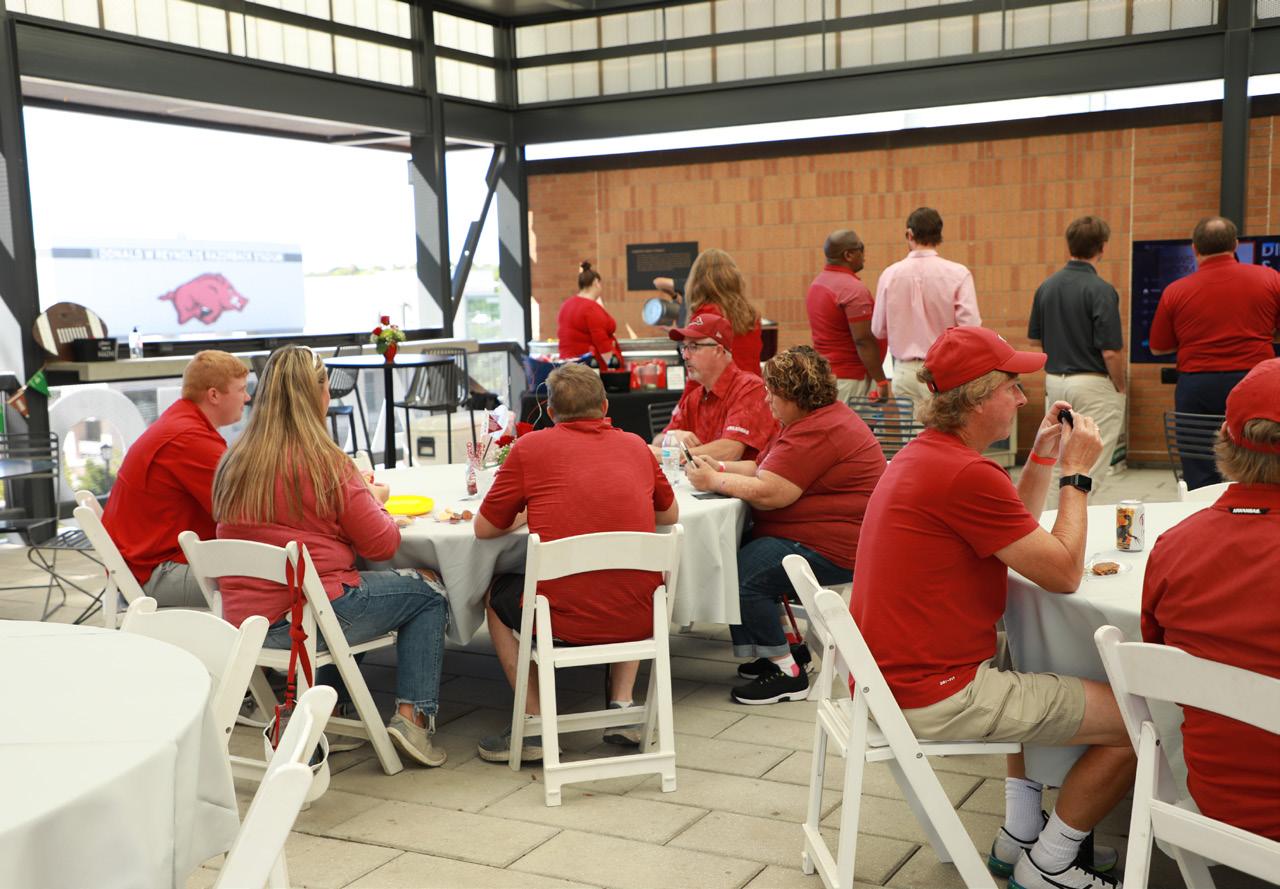
At ArkansasAlumni.com, go to the “Stay Connected” button on the top and click “Join RazorLink.”
RazorLink is an online community where U of A alums and students can interact to network, share job opportunities, provide career support, help with resumes and interview advice, to mentor or find a mentor and more.
Create an account and join this U of A career community today!
Non-Profit Org US Postage PAID Permit No 1 Fayetteville, AR






















 Research, including a geographic range, conducted by co-authors Ray Fisher and Michael Skvarla resulted in maps showing the discovery is the first in the eastern portion of North America in more than 50 years.
Michael Skvarla’s giant lacewing, captured at a local Walmart, is the first one ever reported in Arkansas.
Research, including a geographic range, conducted by co-authors Ray Fisher and Michael Skvarla resulted in maps showing the discovery is the first in the eastern portion of North America in more than 50 years.
Michael Skvarla’s giant lacewing, captured at a local Walmart, is the first one ever reported in Arkansas.


 By John Lovett
By John Lovett



 by Robby Edwards
by Robby Edwards






























 Scott Walnofer (left in
Fendley Ragland (right),
Scott Walnofer (left in
Fendley Ragland (right),












 22. Enclothe: Evolve Fashion Show
23. SMASH: Benvenuto in Italia
(April 15, Fayetteville Town Center; food planned, prepared and served by students; event planned and managed by students)
22. Enclothe: Evolve Fashion Show
23. SMASH: Benvenuto in Italia
(April 15, Fayetteville Town Center; food planned, prepared and served by students; event planned and managed by students)




























































